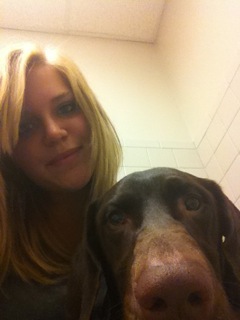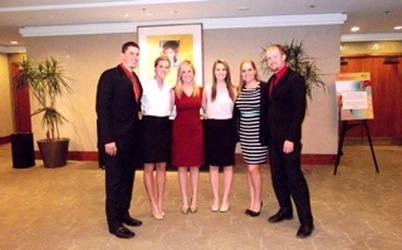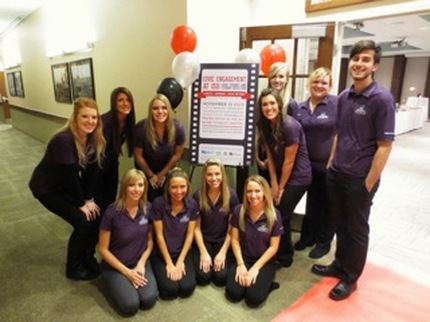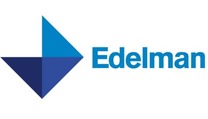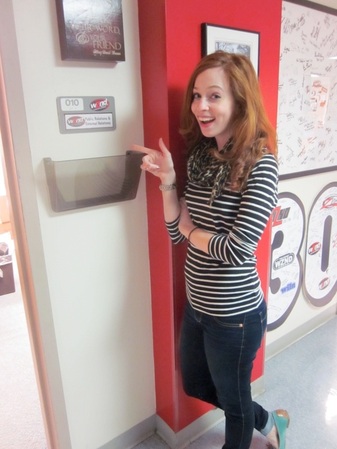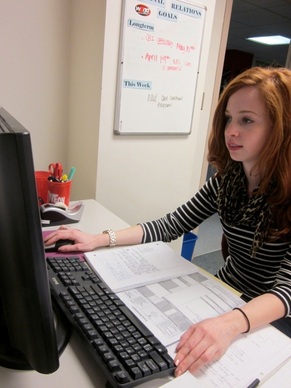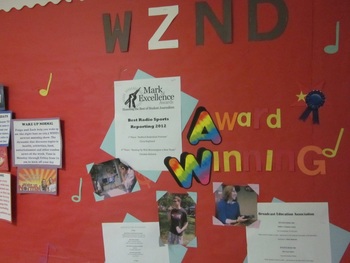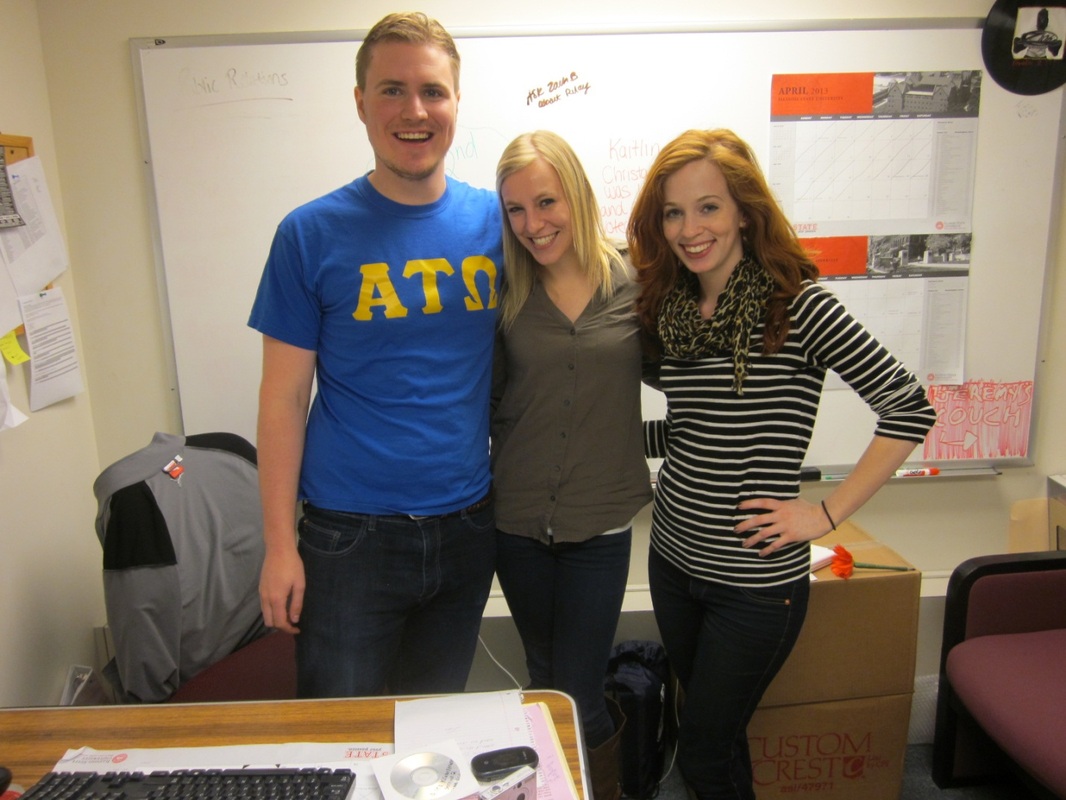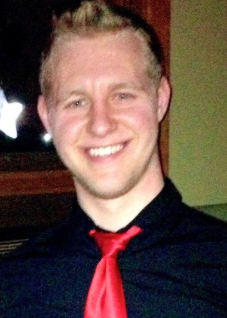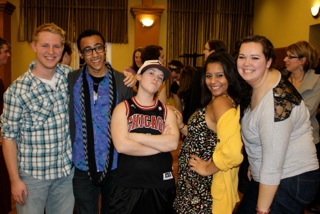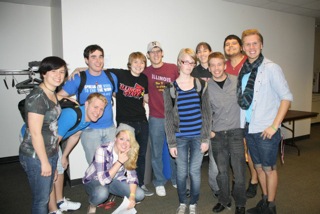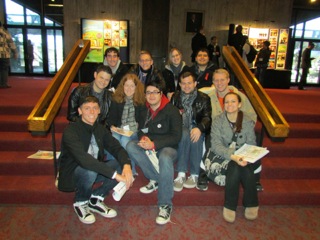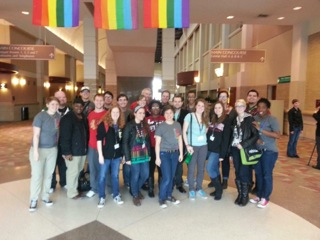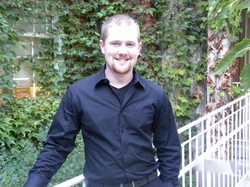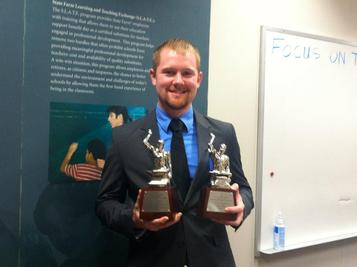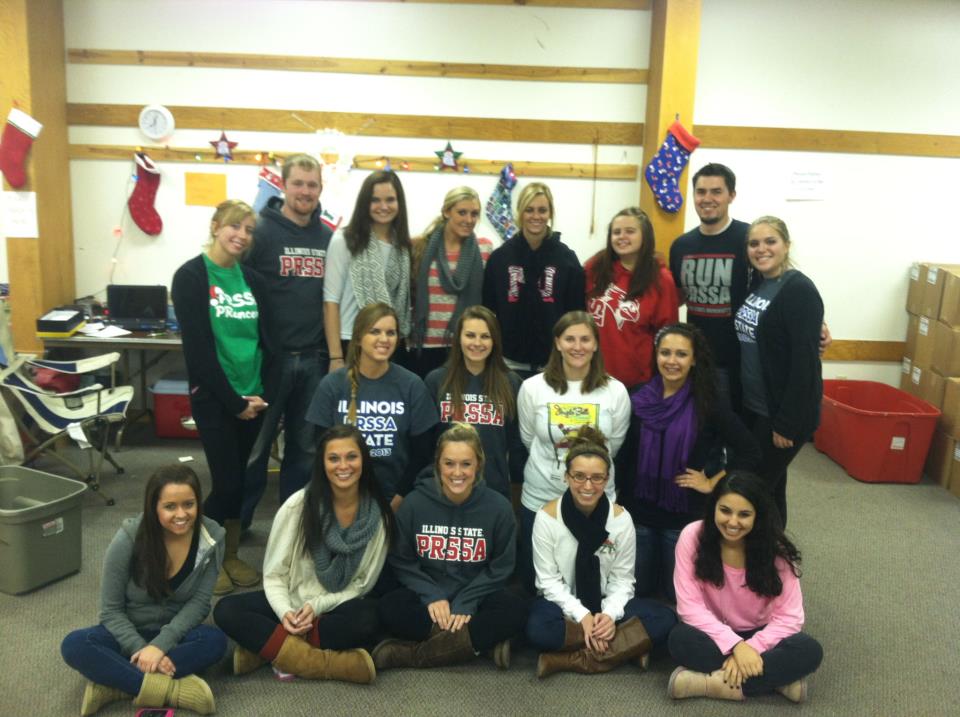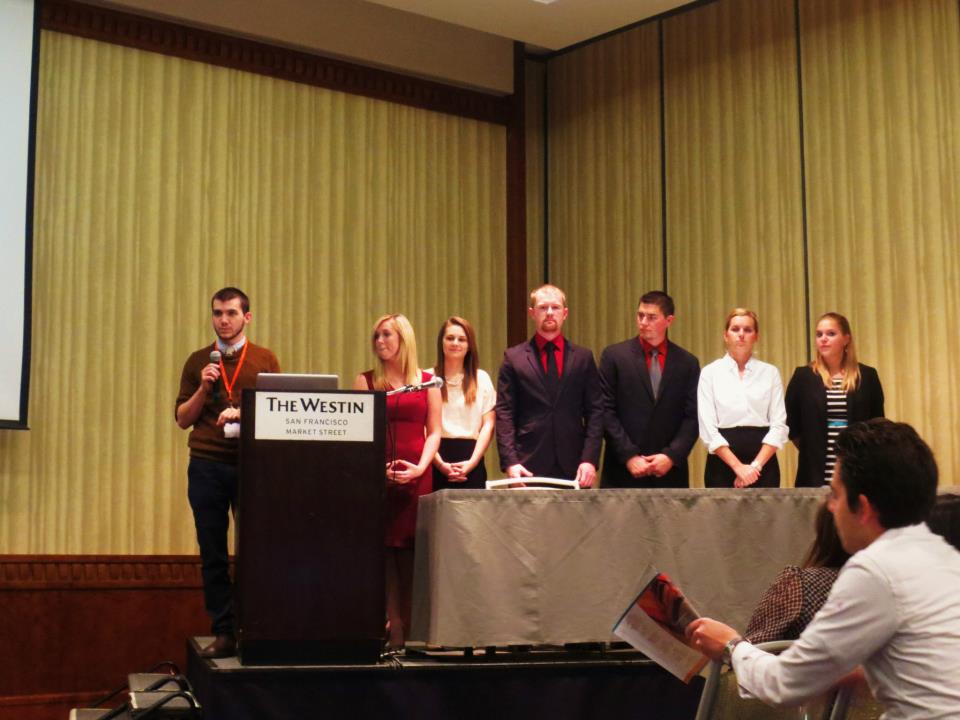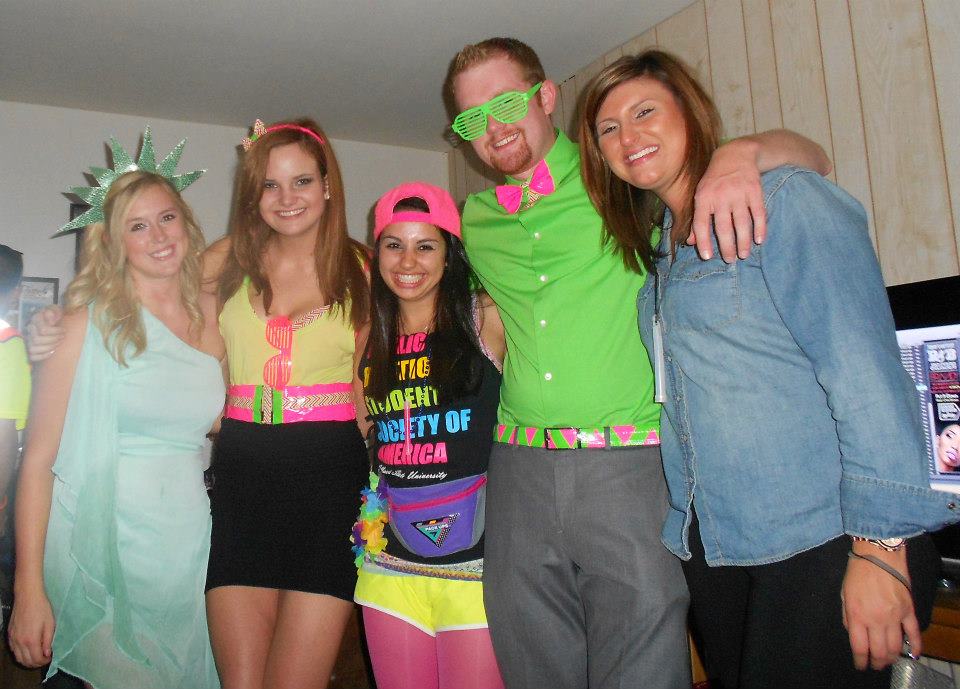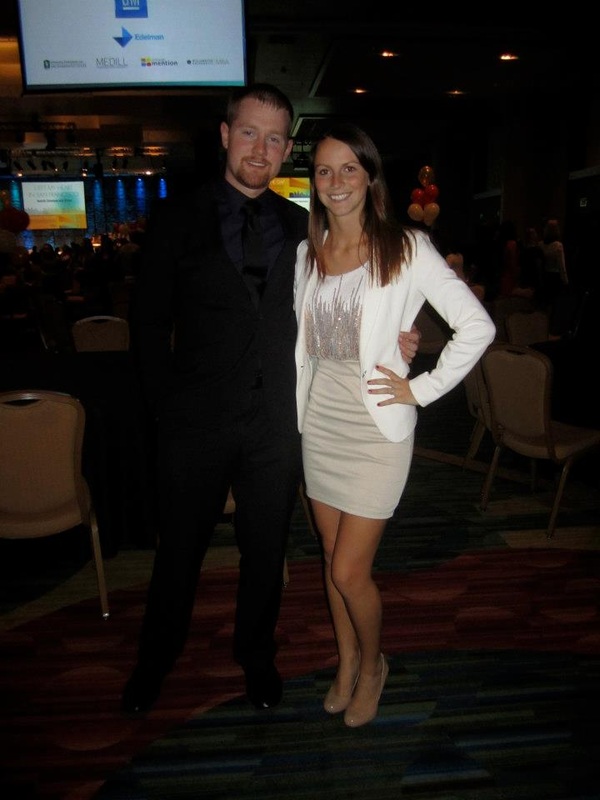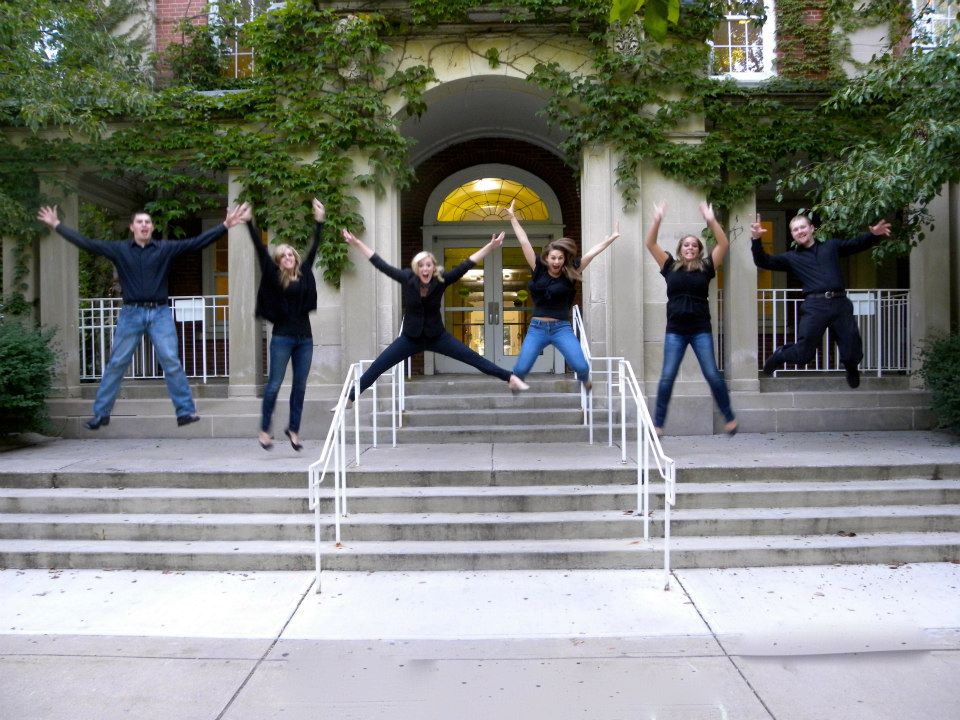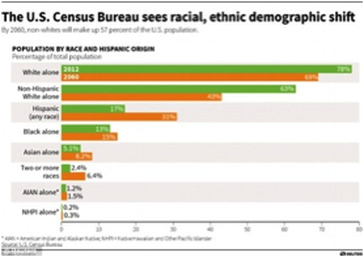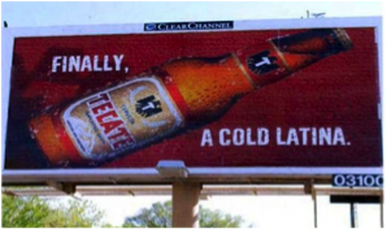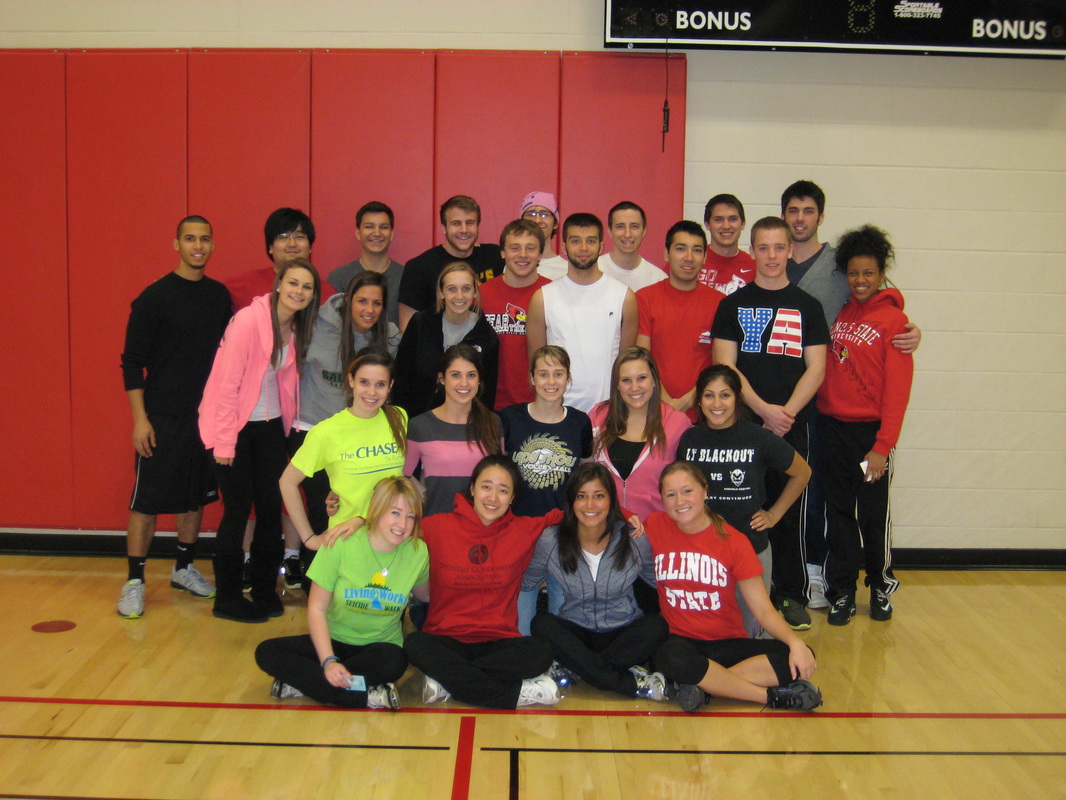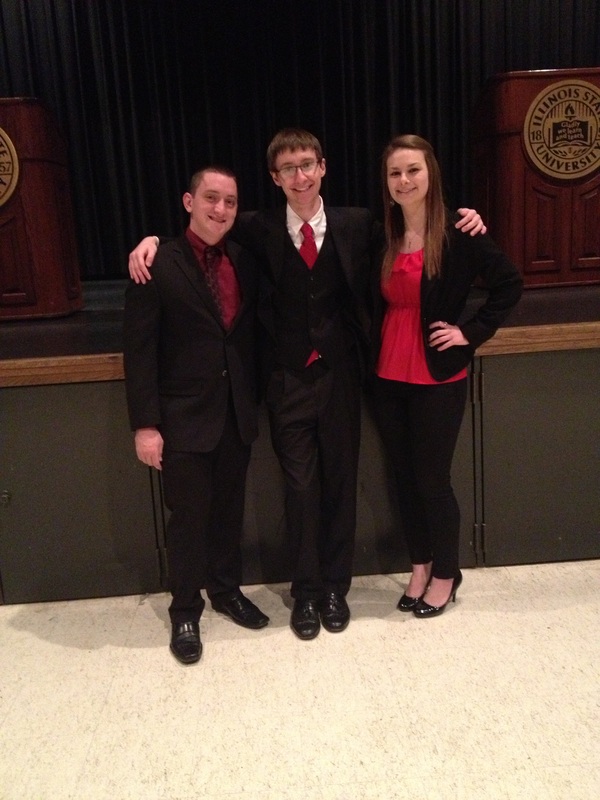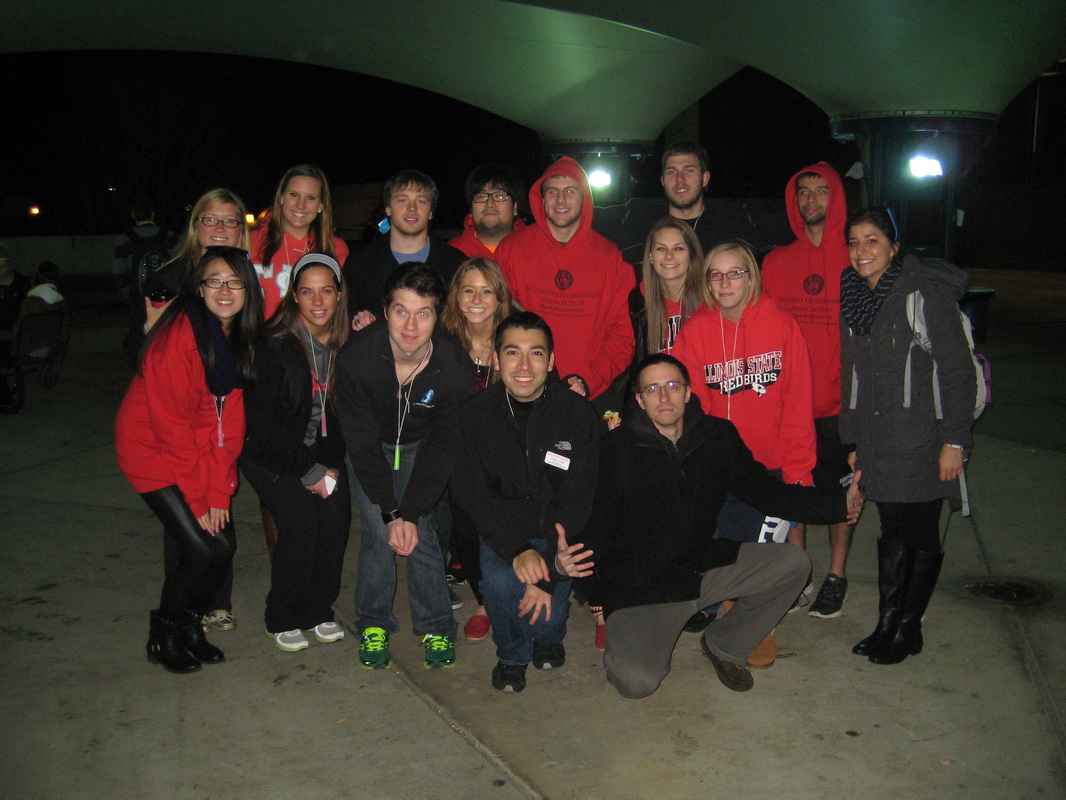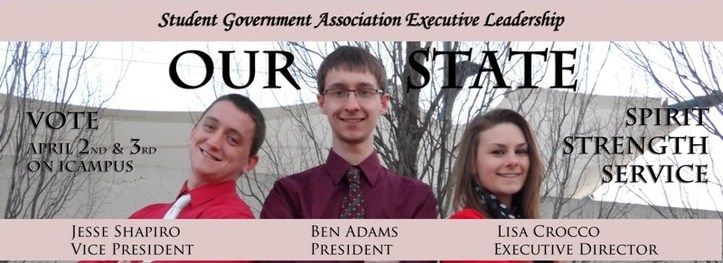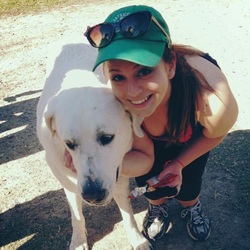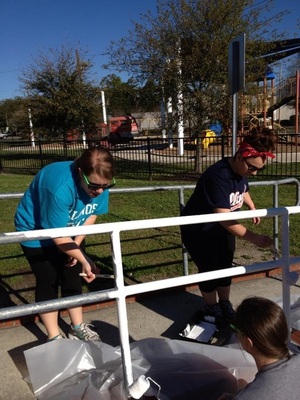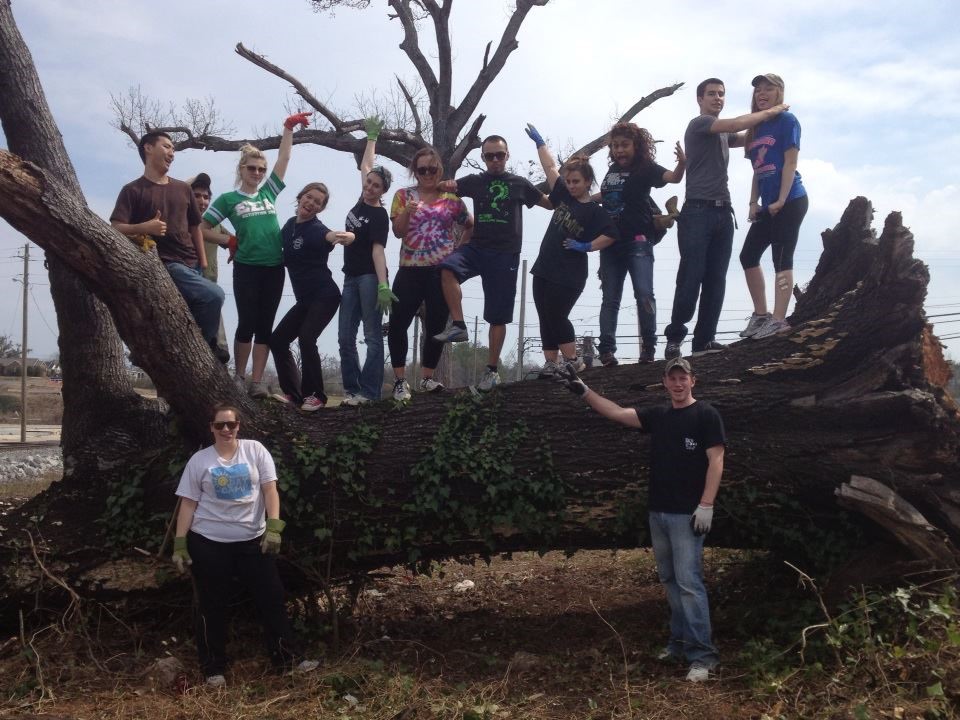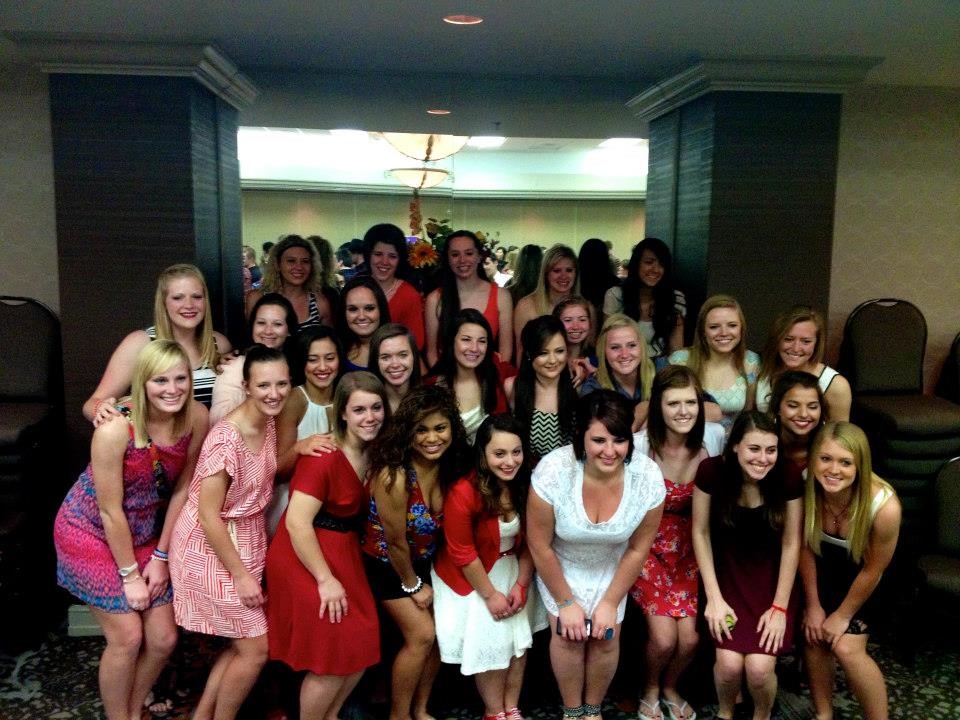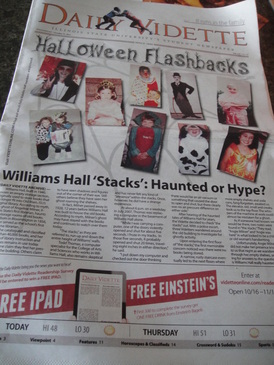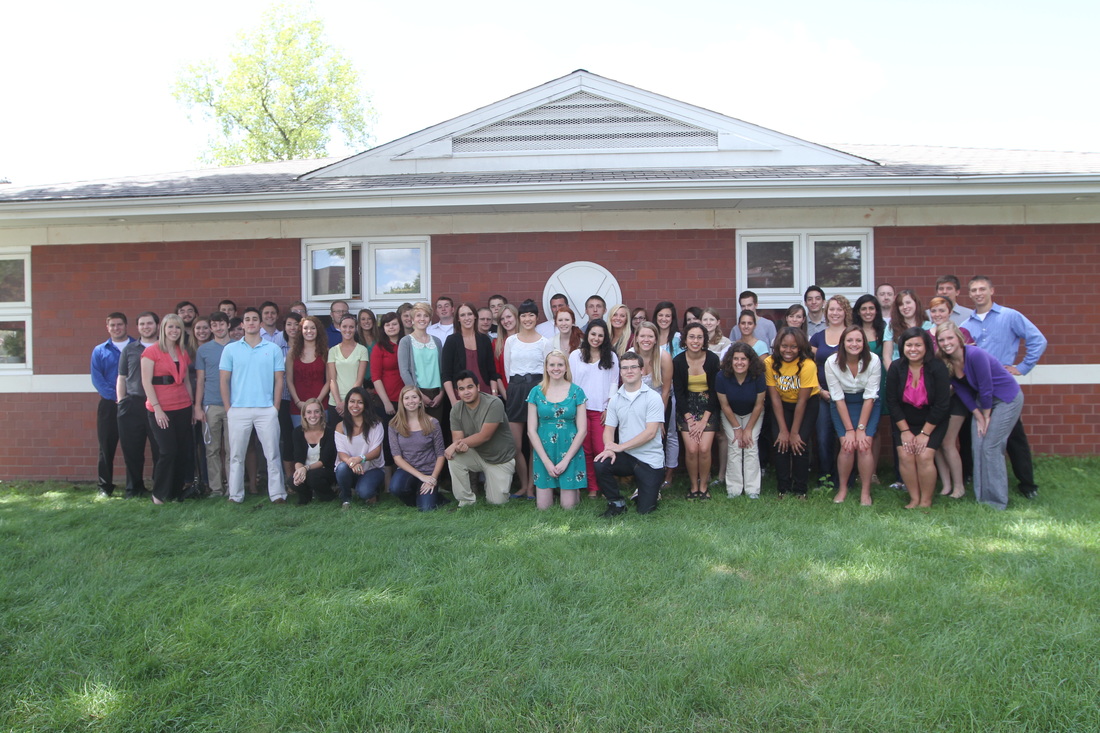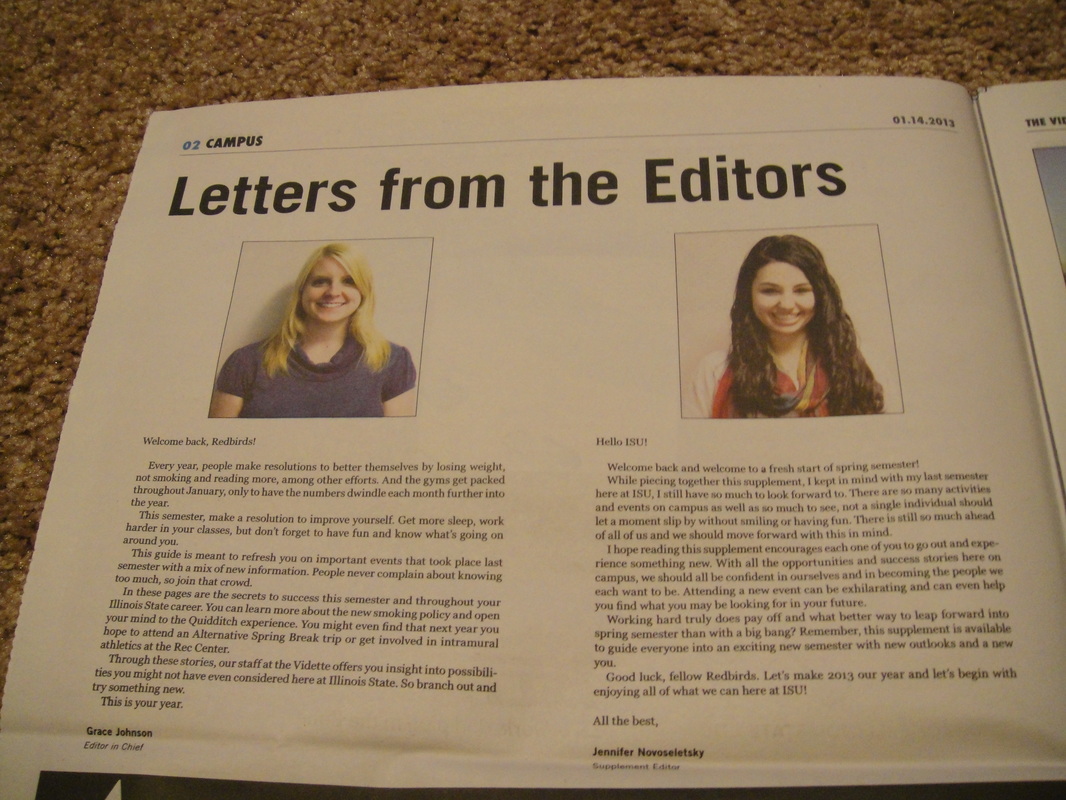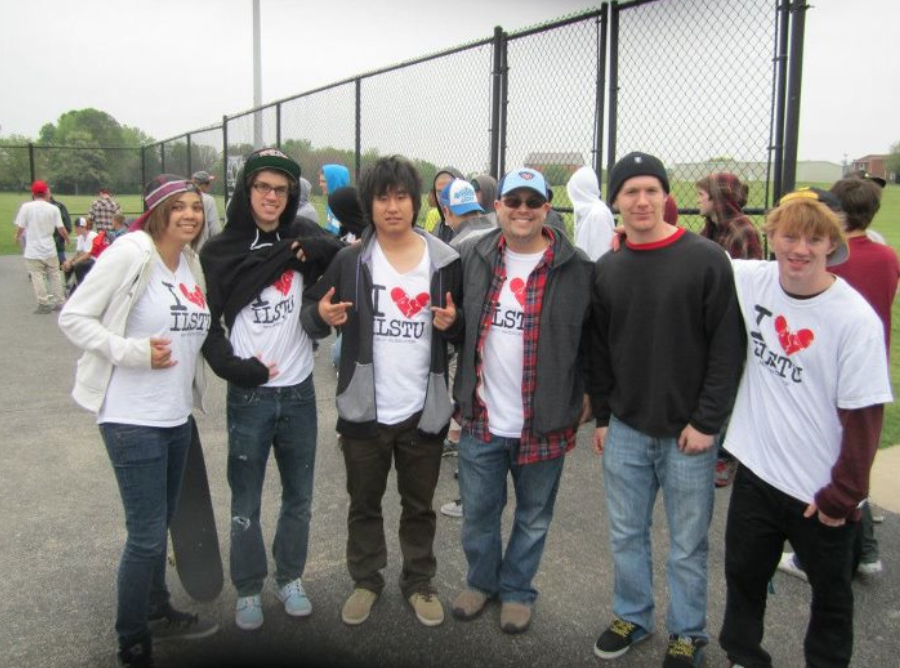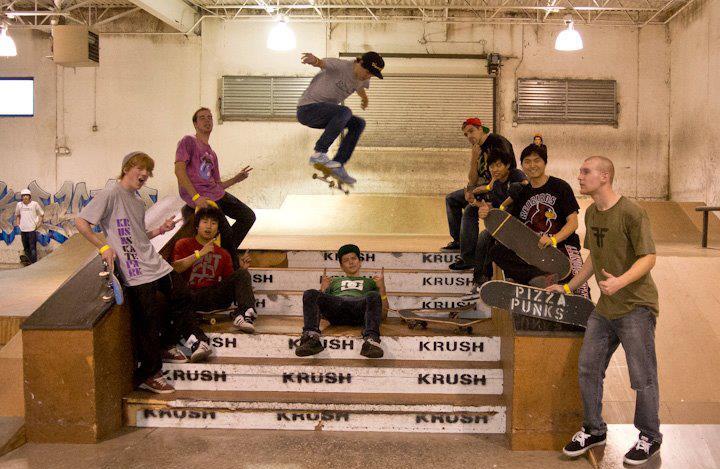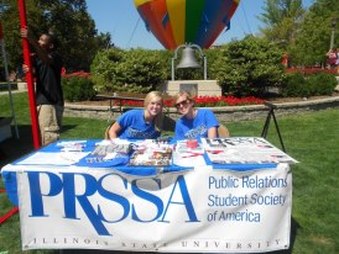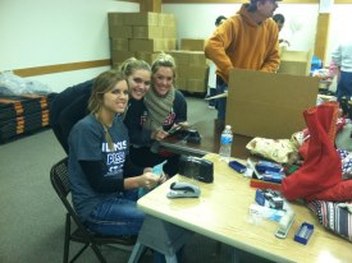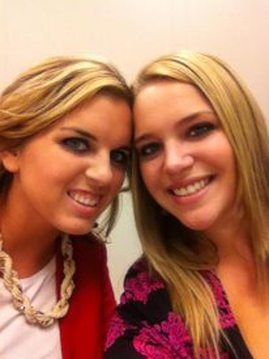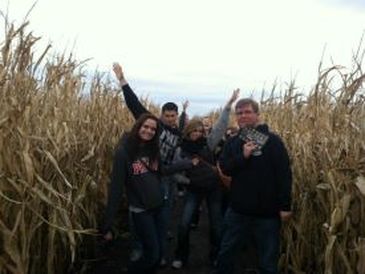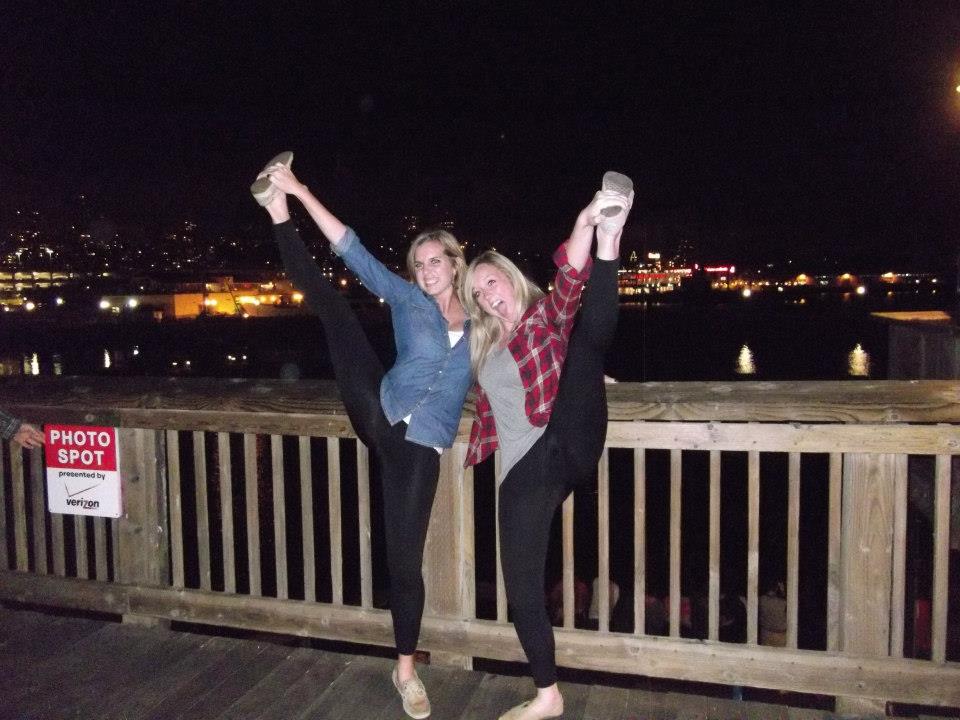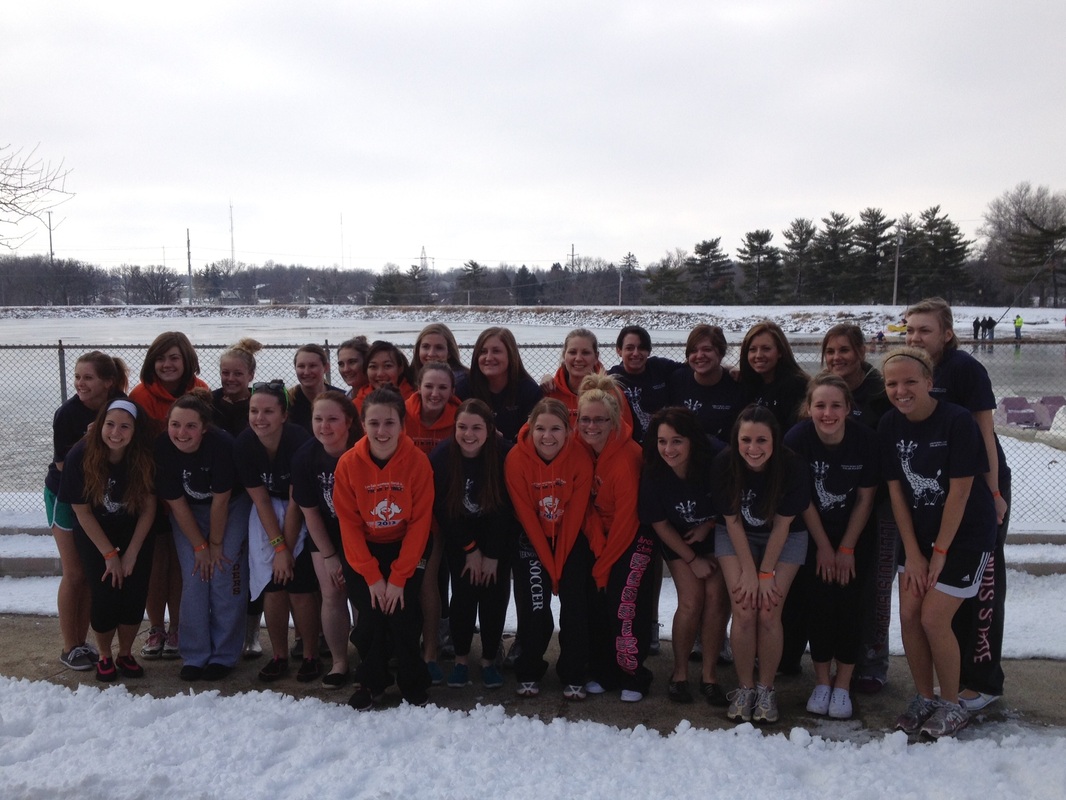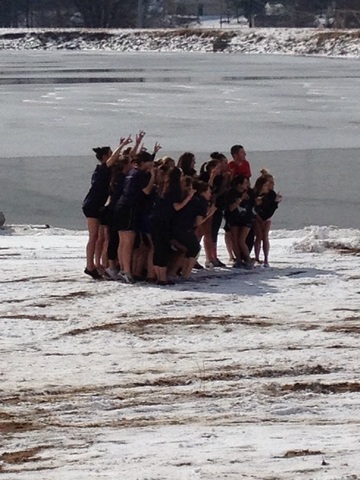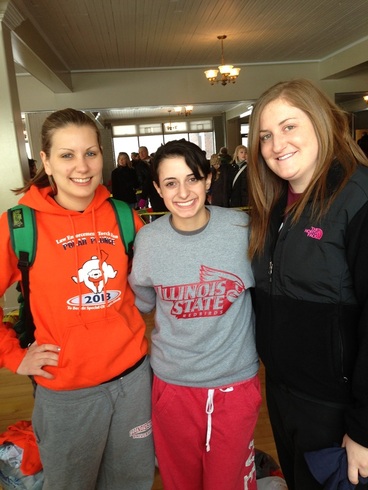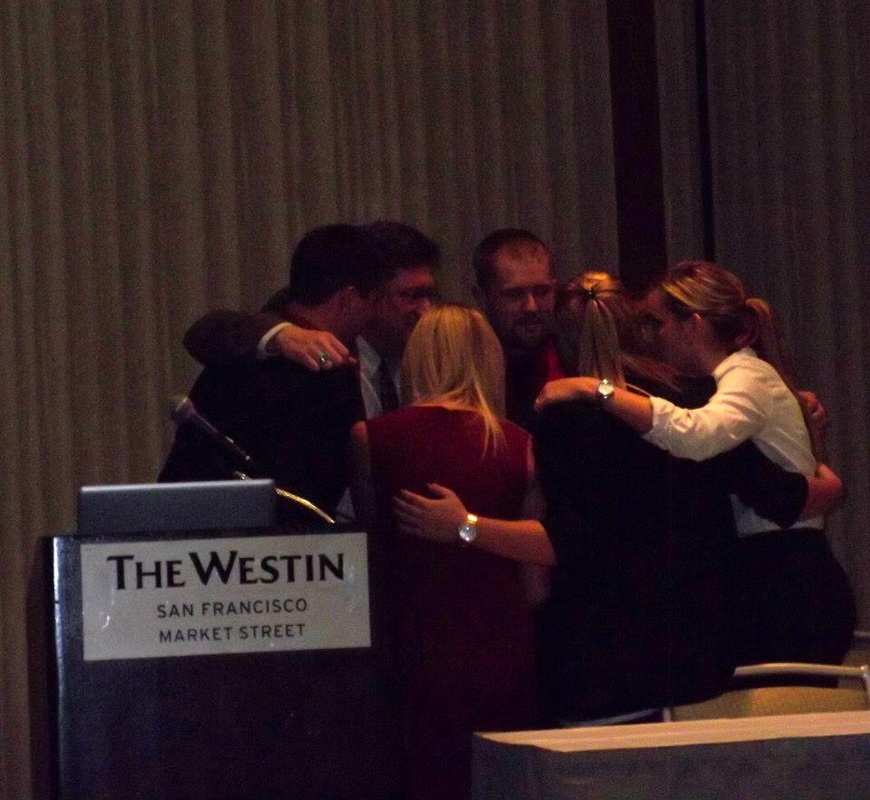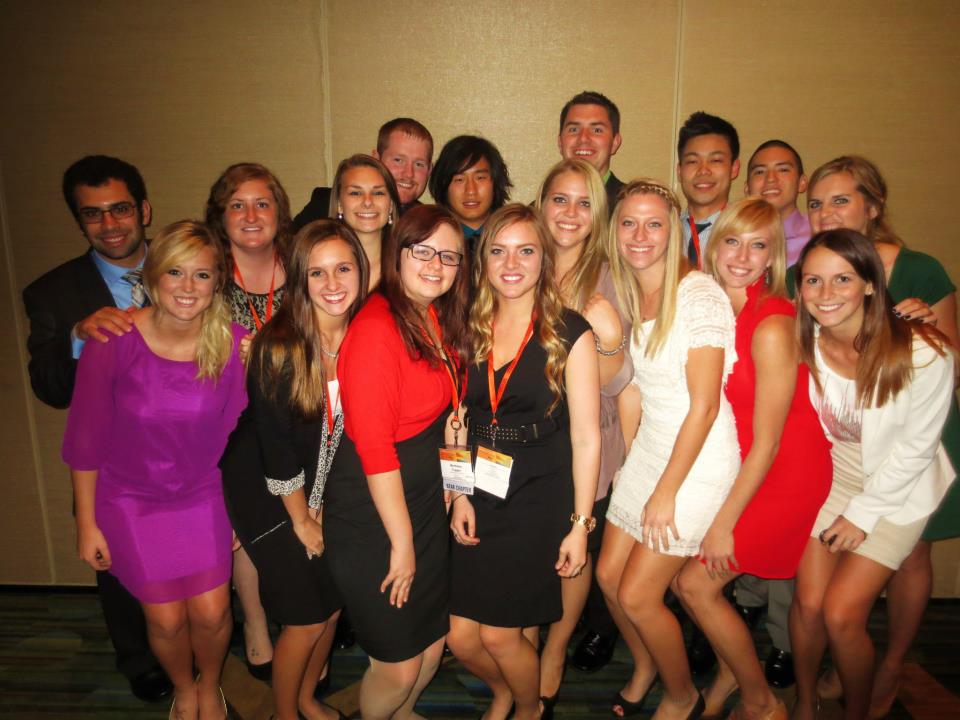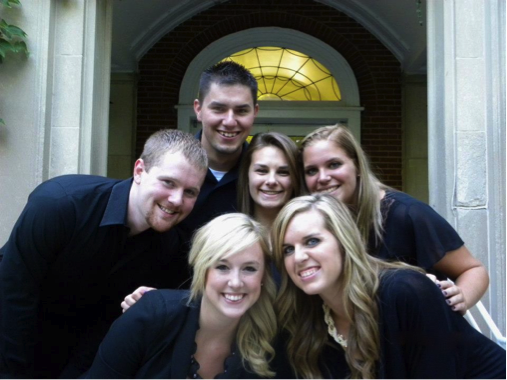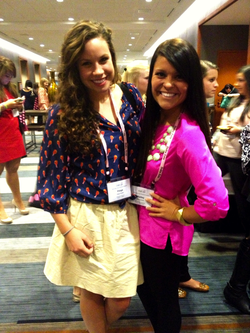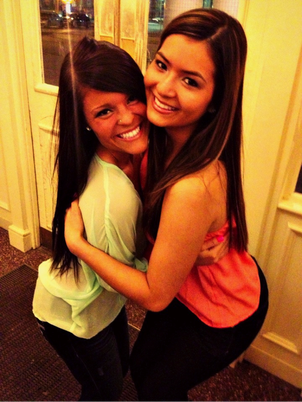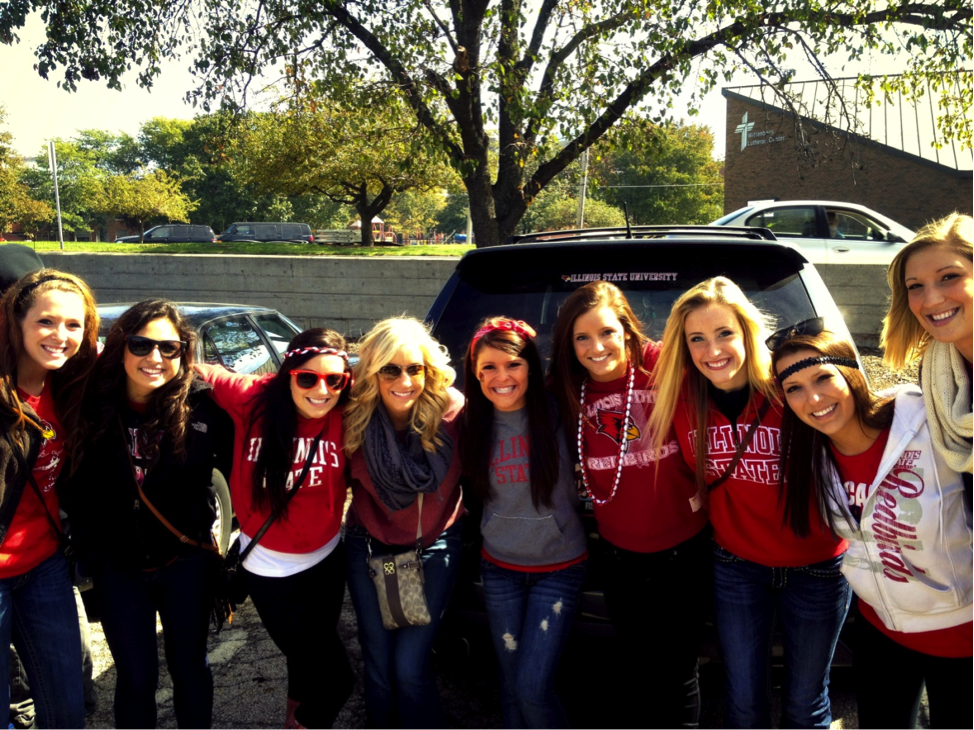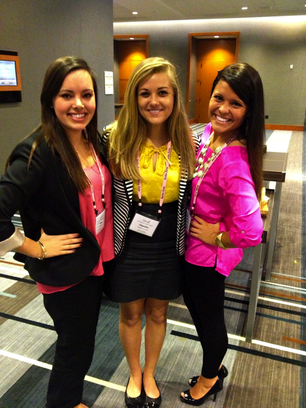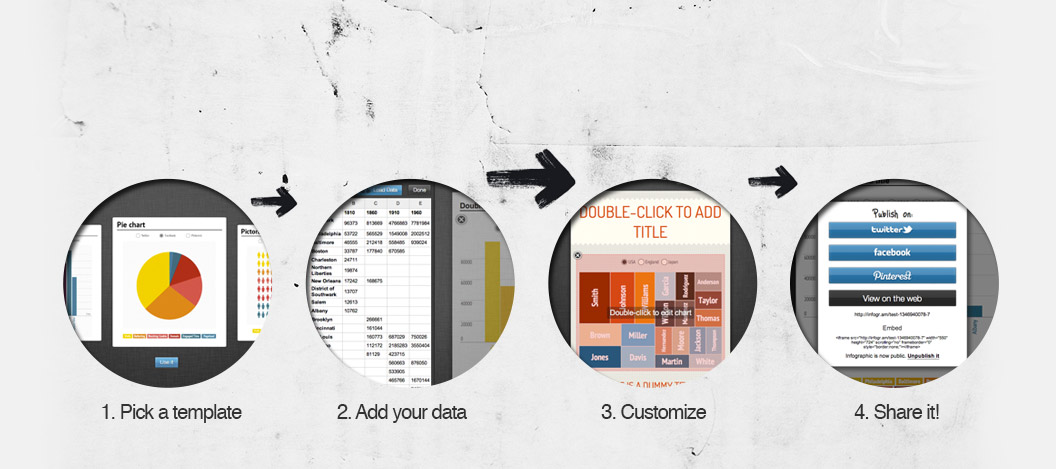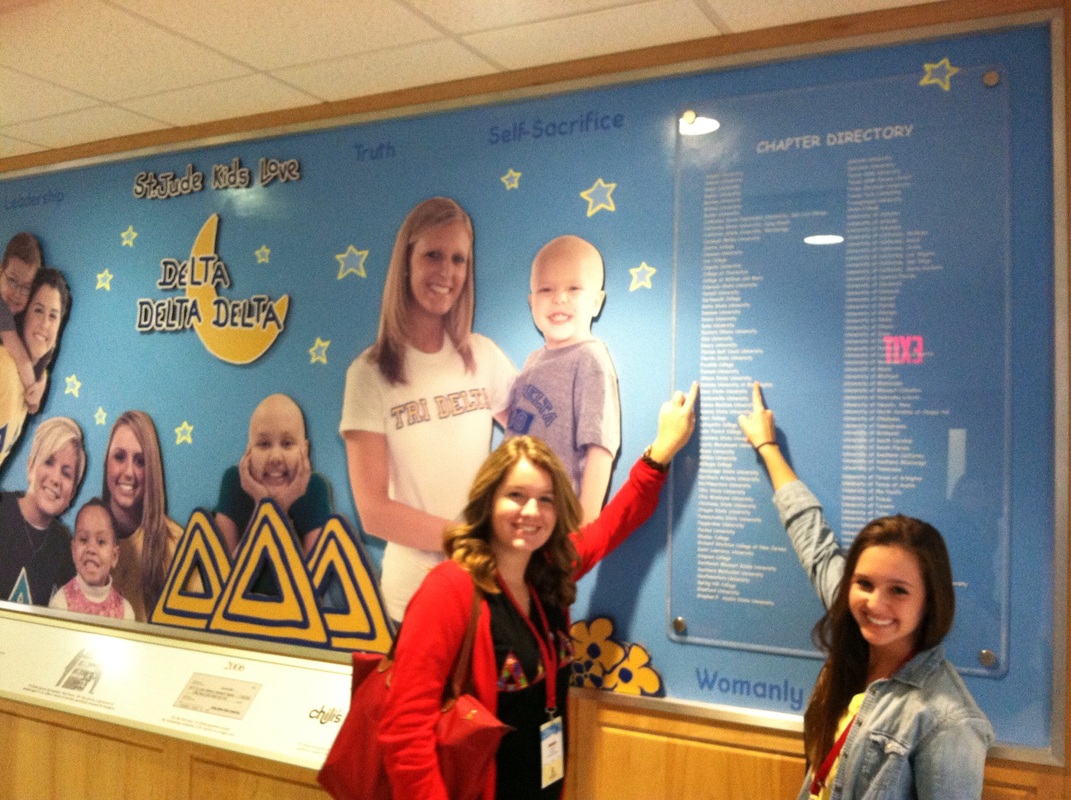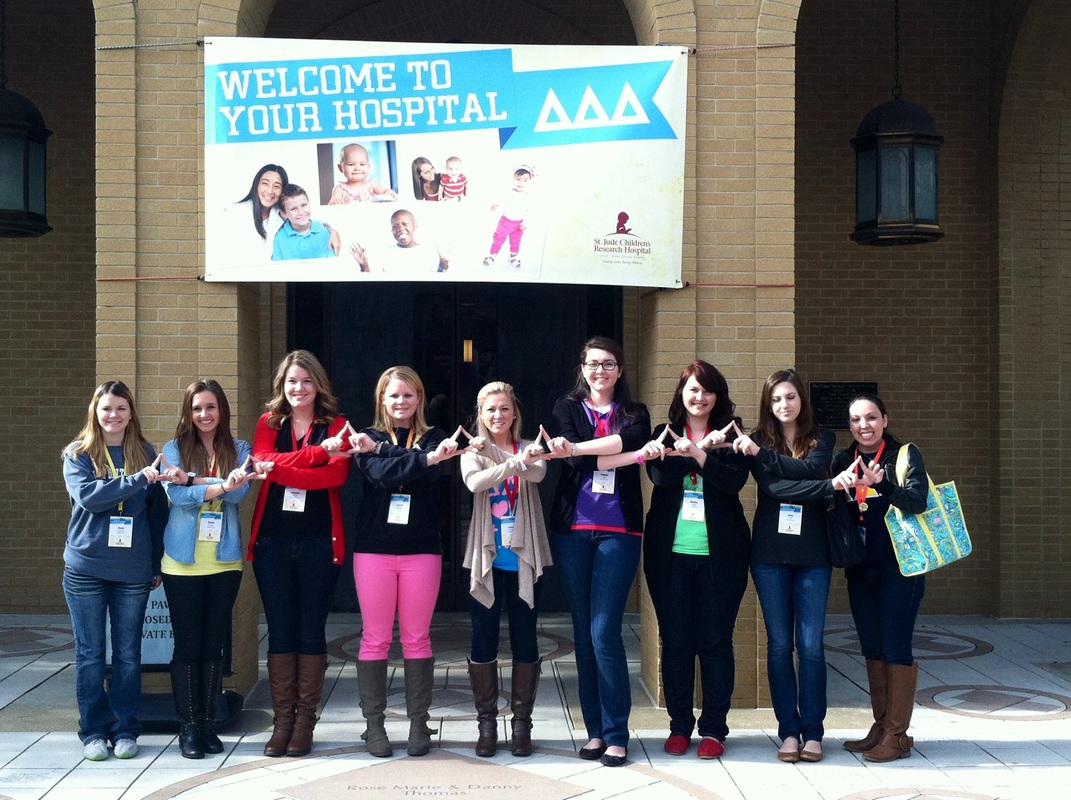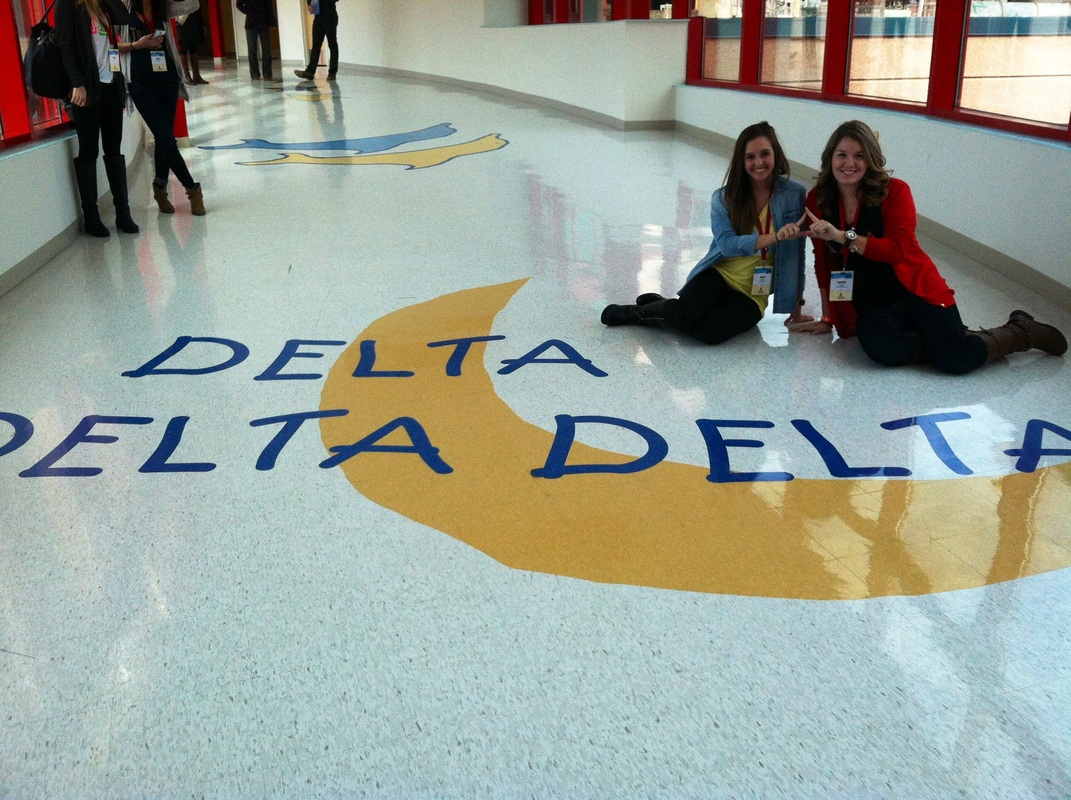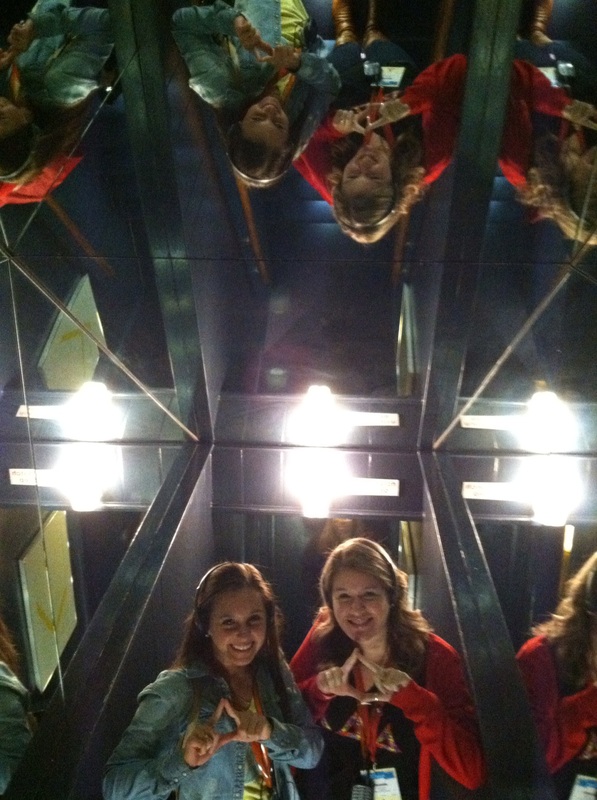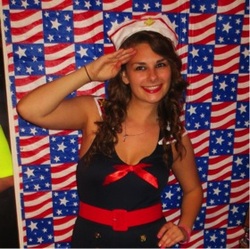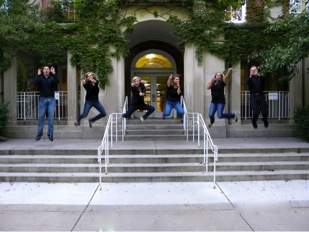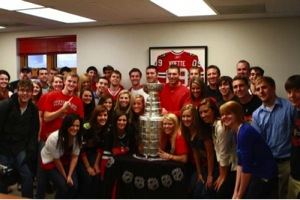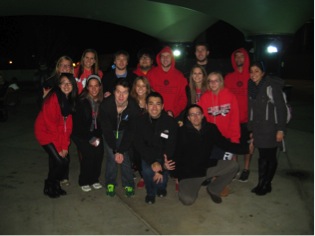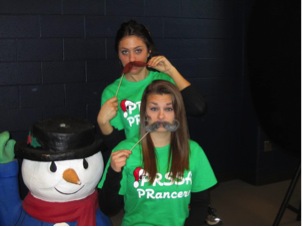May 2013
Why you should take COM 361 Mass Media Law and Ethics
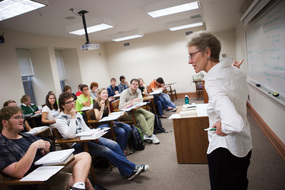
You may be thinking, “Of all the electives available, why the heck should I choose one on law? Talk about boring!” Wrong. COM 361, Mass Media Law, Policy and Ethics is a class that is both interesting and will become beneficial to all communication majors in the future.
Dr. Maria Moore teaches multiple sections of this class, and let me tell you, she is a fantastic teacher who has many years of experience in broadcast under her belt, yet she is very humble about it, and engages students using multiple teaching styles and intriguing case studies. Not only are the topics relevant for anyone in the communication field, but Dr. Moore also makes students treat the class like a job. Instead of research papers, students write memos and along with a syllabus have agendas. I am currently in this class and I have highly enjoyed it so far and am happy my major required it or I might have never thought about taking it.
So back to the question of why you as a PR major should choose this as an elective. Dr. Moore has the answers.
1. Although PR students are not required to take Mass Media Law and Ethics, why do you believe PR students should consider taking this class as an elective?
Studying Mass Media Law will help a public relations practitioner on three levels.
2. In what ways does this class apply to what PR professionals may face in the real world?
Media Law is a very practical and relevant course. At its essence is real-world case studies as the law is built upon real people experiencing
real issues in real life. Each of our legal principles is grounded in case law, adjudicated by courts, resulting in decisions that set a foundation
for future action. A public relations professional needs to know what can be trademarked or protected by copyright; the difference in privacy law
for a public person version the law protecting a private individual; what kinds of information is accessible through public records and how to get
access to them; and the legal remedies for damaging the reputation of a business or a person. Knowing the legal principles and the appropriate
vocabulary will build confidence for the aspiring professional, and when in the workplace, build credibility among coworkers.
3. I know you also teach Ethics, do you suggest PR students to also consider taking this class as one of their electives?
In my opinion, there is no better combination of courses than to take Media Law (Com 361) in the fall and then Media Ethics (COM 367) in the
spring or summer. The two courses work very well together, covering similar issues like privacy or commercial speech, but [also] approaching the subjects from different perspectives. The best way to describe them is Law helps a student understand what actions or decision MUST take
place while Ethics adds in the nuance of what OUGHT to happen. This dynamic of MUST/OUGHT is a great tension that a mature, critical thinking professional navigates in the course of a career. As an instructor, I also teach the courses very differently with Law based in a great deal of information sharing (right brain work) and Ethics based in a great deal of discussion and analysis (left brain work) so a student taking both of my courses will experience my teaching styles in different ways that won't seem repetitive or redundant.
Next time you are trying to figure out what electives you should take, do not just skip over COM 361.You will be able to learn from someone with years of experience and learn laws, which can easily apply to your future career.
By Kaylin Smith
Dr. Maria Moore teaches multiple sections of this class, and let me tell you, she is a fantastic teacher who has many years of experience in broadcast under her belt, yet she is very humble about it, and engages students using multiple teaching styles and intriguing case studies. Not only are the topics relevant for anyone in the communication field, but Dr. Moore also makes students treat the class like a job. Instead of research papers, students write memos and along with a syllabus have agendas. I am currently in this class and I have highly enjoyed it so far and am happy my major required it or I might have never thought about taking it.
So back to the question of why you as a PR major should choose this as an elective. Dr. Moore has the answers.
1. Although PR students are not required to take Mass Media Law and Ethics, why do you believe PR students should consider taking this class as an elective?
Studying Mass Media Law will help a public relations practitioner on three levels.
- First, many aspects of the law we cover have a direct bearing on the work environment and work product in public relations. Discussions of copyright, trademark, privacy, reputation and commercial speech are integral to the responsibilities of the PR profession.
- Second, other aspects of the law we discuss indirectly impact public relations as our focus on journalistic legal issues impact an understanding of the PR/News dynamic. Discussions of the free press rights afforded to news gathering may empower a public relations professional to better understand the framework a journalist encounters.
- The third area of impact for public relations is at the personal/human level. We all are impacted by issues of free speech, of privacy, of justice and we cannot avoid interactions with the law in our personal life through contracts we sign or regulations that impact our lives.
2. In what ways does this class apply to what PR professionals may face in the real world?
Media Law is a very practical and relevant course. At its essence is real-world case studies as the law is built upon real people experiencing
real issues in real life. Each of our legal principles is grounded in case law, adjudicated by courts, resulting in decisions that set a foundation
for future action. A public relations professional needs to know what can be trademarked or protected by copyright; the difference in privacy law
for a public person version the law protecting a private individual; what kinds of information is accessible through public records and how to get
access to them; and the legal remedies for damaging the reputation of a business or a person. Knowing the legal principles and the appropriate
vocabulary will build confidence for the aspiring professional, and when in the workplace, build credibility among coworkers.
3. I know you also teach Ethics, do you suggest PR students to also consider taking this class as one of their electives?
In my opinion, there is no better combination of courses than to take Media Law (Com 361) in the fall and then Media Ethics (COM 367) in the
spring or summer. The two courses work very well together, covering similar issues like privacy or commercial speech, but [also] approaching the subjects from different perspectives. The best way to describe them is Law helps a student understand what actions or decision MUST take
place while Ethics adds in the nuance of what OUGHT to happen. This dynamic of MUST/OUGHT is a great tension that a mature, critical thinking professional navigates in the course of a career. As an instructor, I also teach the courses very differently with Law based in a great deal of information sharing (right brain work) and Ethics based in a great deal of discussion and analysis (left brain work) so a student taking both of my courses will experience my teaching styles in different ways that won't seem repetitive or redundant.
Next time you are trying to figure out what electives you should take, do not just skip over COM 361.You will be able to learn from someone with years of experience and learn laws, which can easily apply to your future career.
By Kaylin Smith
Senior Farewell Video
April 2013
Writing Test Workshop
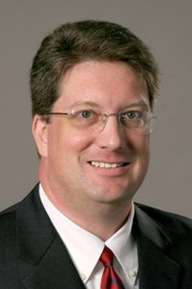
As the semester’s end draws near, many students are applying to summer internships or jobs. Since many public relations agencies and corporate public relations departments give a writing test during their application process, our Chapter held a workshop to go over the format to better prepare members for their future endeavors. Dr. Peter Smudde A.P.R., director of public relations program and ISU PRSSA’s faculty adviser, led a workshop on what these writing tests are like and how to prepare for them. He said most tests are timed and sometimes candidates cannot use the Internet. Though these tests cover many things students’ education teaches them, it is important to still prepare. Below is a list of things that could be covered within a writing test.
“Trying to make yourself stand out isn’t easy, but if you focus on these things that matter, you have the opportunity to prove you can do it,” Dr. Smudde said. “This is the way.”
By Shelby Ray
- Grammar. For example, knowing the difference between effect and affect. Effect being the outcome, oftentimes used as a noun. Affect typically means to influence, often times used as a verb.
- Spelling. My recommendation is looking up commonly misspelled words.
- Proofreading. Proofreading is not only an important skill, but knowing the correct proofreading marks is too. These marks can be found in the AP Stylebook.
- Writing a press release. Keep in mind the test is most likely timed.
- Writing a persuasive pitch. Sometimes applicants are limited to the amount of sentences or character they can use.
- It is important to stay updated with current events both worldly and PR related. You may be asked to name blogs you read or people you follow on Twitter.
- Know about campaigns for the company you are applying to.
- Be able to describe trends within the media.
- Do research on the company. Know important figures within that company and its mottos and culture. If it is a public relations agency, know some of its clients.
- Know the PRSA code of ethics and refer to it if there is an ethics section.
“Trying to make yourself stand out isn’t easy, but if you focus on these things that matter, you have the opportunity to prove you can do it,” Dr. Smudde said. “This is the way.”
By Shelby Ray
Agency Public Relations Panel at COM Week
“You have to imagine the possibilities, interact with your peers and ignite your future,” said Michael Taylor, founder and CEO of M.J. Taylor PR and Consulting Firm.
One of many highly anticipated panels, the agency public relations panel featured three ISU alumni professionals with various levels of experience. The panelists gave advice about what it takes to make it in the agency world.
Michelle Murphy, account executive at Weber Shandwick, works in media relations. Some of clients she works on are Pedigree dog food and got milk? Jillian Collins, account executive at Edelman, works in new business and marketing, so essentially, Edelman is her client. Taylor, who works with sports charities to fundraise and find sponsors, talked about the non-profit side of public relations and how the experiences vary from small agencies to big agencies. Bigger agencies have more resources and that was the main difference between the two according to Taylor.
Each professional described the benefits of being an intern and advised students to start gaining experience while in college. To stand out one, should always do everything with a smile, whatever the task is. One should be grateful for their position and demonstrate their capability to shine. The big piece of advice most students got out of the panel was to take advantage of opportunities.
“If the door is locked, look for as many windows as possible,” Taylor said. “I guarantee one of them is open.”
At Illinois State University, it is evident the School of Communication has astounding resources. It all begins with Tom Lamonica, the director of internship field experiences.
Murphy and Collins talked about their experiences in college and how current students can control their future. They expanded with how their college experiences helped them in their career now. Both of them were a part of the School of Communication Promotion and Development team (best known as SoC PD or “the COM Week interns”) and COUNTRY Financial internships which helped them garnish the positions they have today.
“COUNTRY was the most beneficial internship that we had while we were in school,” Murphy and Collins said.
Some important attributes interns should have according to the panel are being well rounded, savvy, “comfortable with being uncomfortable,” specialists in one area and most importantly, be smart. Do not just think of the job, think outside the box and throw in your own flavor. Be your own person and do the job, but do it in a different way. Be transparent in what you want.
“Do what you love and you won’t work a day in your life,” Taylor said. “I truly believe that this field is all about sacrifices and if you continue to work with what you love, the sacrifices are worth it. I promise you.”
By Ryan Smart
One of many highly anticipated panels, the agency public relations panel featured three ISU alumni professionals with various levels of experience. The panelists gave advice about what it takes to make it in the agency world.
Michelle Murphy, account executive at Weber Shandwick, works in media relations. Some of clients she works on are Pedigree dog food and got milk? Jillian Collins, account executive at Edelman, works in new business and marketing, so essentially, Edelman is her client. Taylor, who works with sports charities to fundraise and find sponsors, talked about the non-profit side of public relations and how the experiences vary from small agencies to big agencies. Bigger agencies have more resources and that was the main difference between the two according to Taylor.
Each professional described the benefits of being an intern and advised students to start gaining experience while in college. To stand out one, should always do everything with a smile, whatever the task is. One should be grateful for their position and demonstrate their capability to shine. The big piece of advice most students got out of the panel was to take advantage of opportunities.
“If the door is locked, look for as many windows as possible,” Taylor said. “I guarantee one of them is open.”
At Illinois State University, it is evident the School of Communication has astounding resources. It all begins with Tom Lamonica, the director of internship field experiences.
Murphy and Collins talked about their experiences in college and how current students can control their future. They expanded with how their college experiences helped them in their career now. Both of them were a part of the School of Communication Promotion and Development team (best known as SoC PD or “the COM Week interns”) and COUNTRY Financial internships which helped them garnish the positions they have today.
“COUNTRY was the most beneficial internship that we had while we were in school,” Murphy and Collins said.
Some important attributes interns should have according to the panel are being well rounded, savvy, “comfortable with being uncomfortable,” specialists in one area and most importantly, be smart. Do not just think of the job, think outside the box and throw in your own flavor. Be your own person and do the job, but do it in a different way. Be transparent in what you want.
“Do what you love and you won’t work a day in your life,” Taylor said. “I truly believe that this field is all about sacrifices and if you continue to work with what you love, the sacrifices are worth it. I promise you.”
By Ryan Smart
Alumnus Returns for COM Week

Chicago weatherman Mike Caplan, a graduate of Illinois State University, was a keynote speaker during COM Week 2013. His lighthearted humor captivated his audience as he told stories about his journey into becoming a weatherman for ABC7 News.
“ISU was the launch pad to propel me onto the road I took,” said Caplan.
He transferred to ISU from a community college and the communication department piqued his interest— the WZND radio station in particular. He even became the ISU Radio Speaking champion in 1983.
“I loved it,” he explained. “I did the Friday night shows and took more COM classes.”
One of those classes was broadcast news. Intrigued by the TV side of things, Caplan opted to work for TV-10, where one of his first jobs was to report the weather. Having participated on the speech team in high school, speaking in front of others seemed to come naturally for him. He did so well that it was not long before he was made the official weatherman for ISU.
After graduating in May 1984, Caplan quickly secured a job in Rockford working as a general assignment reporter. A monumental moment in his career was being able to interview Ronald Reagan about his experience playing football at Eureka College, which at this point, had only been done by one other journalist. He described his interview with President Reagan as a great experience and said the President had everyone in the room laughing.
After a few more jobs along the way, it was New Year’s Eve 1993 when he began anchoring at ABC7 and has been there ever since. The audience even got to see clips of him in action during his speech; Caplan clearly enjoys what he does.
Caplan’s talents are not limited to just reporting the weather; his other passion, photography, has long been a pastime of his. Students got to see a slideshow of his photos, from rural landscapes to cumulonimbus clouds, which was very fitting. He described this side business as a “creative expression in capturing beauty with a lens.”
“Focus on what you want to do,” he said. “Be prepared to show your abilities to prove to your potential employer that you’ve got some value.”
Caplan advised students reach out and start networking with professionals. After all, it’s not what you know but who you know. He also pointed out the resources students have on campus.
“The more things you can expose yourself to here, the better chance you have of getting that first job,” he said.
The first job you get may not be the ideal job, but Caplan encourages students to take it because that is how a new graduate can get their foot in the door for the field they want to go into.
“They don’t expect you to be an expert,” he said. “They are taking a risk but you’ve got to show them your worth and make that risk factor smaller for them.”
Caplan’s easygoing disposition made for an overall pleasant and enjoyable keynote speech for COM students.
By Lindsey Clark
“ISU was the launch pad to propel me onto the road I took,” said Caplan.
He transferred to ISU from a community college and the communication department piqued his interest— the WZND radio station in particular. He even became the ISU Radio Speaking champion in 1983.
“I loved it,” he explained. “I did the Friday night shows and took more COM classes.”
One of those classes was broadcast news. Intrigued by the TV side of things, Caplan opted to work for TV-10, where one of his first jobs was to report the weather. Having participated on the speech team in high school, speaking in front of others seemed to come naturally for him. He did so well that it was not long before he was made the official weatherman for ISU.
After graduating in May 1984, Caplan quickly secured a job in Rockford working as a general assignment reporter. A monumental moment in his career was being able to interview Ronald Reagan about his experience playing football at Eureka College, which at this point, had only been done by one other journalist. He described his interview with President Reagan as a great experience and said the President had everyone in the room laughing.
After a few more jobs along the way, it was New Year’s Eve 1993 when he began anchoring at ABC7 and has been there ever since. The audience even got to see clips of him in action during his speech; Caplan clearly enjoys what he does.
Caplan’s talents are not limited to just reporting the weather; his other passion, photography, has long been a pastime of his. Students got to see a slideshow of his photos, from rural landscapes to cumulonimbus clouds, which was very fitting. He described this side business as a “creative expression in capturing beauty with a lens.”
“Focus on what you want to do,” he said. “Be prepared to show your abilities to prove to your potential employer that you’ve got some value.”
Caplan advised students reach out and start networking with professionals. After all, it’s not what you know but who you know. He also pointed out the resources students have on campus.
“The more things you can expose yourself to here, the better chance you have of getting that first job,” he said.
The first job you get may not be the ideal job, but Caplan encourages students to take it because that is how a new graduate can get their foot in the door for the field they want to go into.
“They don’t expect you to be an expert,” he said. “They are taking a risk but you’ve got to show them your worth and make that risk factor smaller for them.”
Caplan’s easygoing disposition made for an overall pleasant and enjoyable keynote speech for COM students.
By Lindsey Clark
Not Just For the Boys
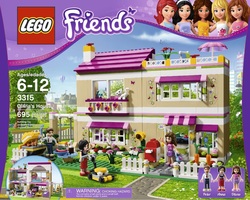
Barbie is for girls and LEGO is for boys, right? Not anymore according to the new line of LEGO launched in December 2011 called LEGO Friends. The company, whose product has previously spoken to boys in the form of themes such as Star Wars, Batman and Mario Brothers, is changing things up in the hopes of targeting a new market of young girls.
The new version of LEGOplaces colorful and slimmer female LEGOs in settings such as in the home, shopping and poolside. These scenarios have sparked controversy from opponents. A petition entitled #LiberateLEGO has circulated stating, “LEGO is for all of us” and marketing products to girls, which are “pink, cute and romantic” is not right.They say it enforces stereotypes and suggests girls only want to play with toys if they appear “girly.”
In response to the criticism, LEGO has stated the decision to create a new line of girl-friendly LEGOs, based on four years of research about how boys and girls play.The goal was to create another option for girls when they reach the “princess phase,” which is around the age boys begin to play with LEGOs. Just weeks after BradWieners of Bloomberg Businessweek published an article investigating the new LEGO Friends, a 1981 LEGO ad surfaced. The ad features a photo of a young red-headed girl wearing overalls and sneakers and holding a LEGO creation.
The ad, which was quickly spread around the social media world features the phrase, “What it is … is beautiful.” It received significant attention, with its nostalgic look and message. The ad contrasts the strict gender roles seen in the current LEGO and LEGO Friends, by featuring a girl dressed in what could easily pass as boy’s clothing, and holding a large LEGO tower, not a LEGO beauty parlor. The message is simplistic and heartwarming.
The LEGO Company is trying to tell the public they do not support gender stereotypes by releasing this gender-neutral ad, but feminist groups are still unhappy. Parents, however, are pleased overall with the product, a fact the LEGO Companyis choosing to focus on since parents are their biggest customer. Needless to say the line will continue, anda 2013 line of “School’s Out” themed LEGO Friends is expected, including a LEGO school and extra-curricular activities such as dance and soccer.
While I think it is great LEGO is trying to appeal to girls, I also think the LEGO Friends are stereotypical because it sends a message that girls are supposed to only be interested in certain toys. Personally, I played with LEGOs as a child, even though they were not feminine and pink and never thought twice about it. In the future, the LEGO Company should consider more carefully the message it is sending to girls with its product.
By Becca Williams
The new version of LEGOplaces colorful and slimmer female LEGOs in settings such as in the home, shopping and poolside. These scenarios have sparked controversy from opponents. A petition entitled #LiberateLEGO has circulated stating, “LEGO is for all of us” and marketing products to girls, which are “pink, cute and romantic” is not right.They say it enforces stereotypes and suggests girls only want to play with toys if they appear “girly.”
In response to the criticism, LEGO has stated the decision to create a new line of girl-friendly LEGOs, based on four years of research about how boys and girls play.The goal was to create another option for girls when they reach the “princess phase,” which is around the age boys begin to play with LEGOs. Just weeks after BradWieners of Bloomberg Businessweek published an article investigating the new LEGO Friends, a 1981 LEGO ad surfaced. The ad features a photo of a young red-headed girl wearing overalls and sneakers and holding a LEGO creation.
The ad, which was quickly spread around the social media world features the phrase, “What it is … is beautiful.” It received significant attention, with its nostalgic look and message. The ad contrasts the strict gender roles seen in the current LEGO and LEGO Friends, by featuring a girl dressed in what could easily pass as boy’s clothing, and holding a large LEGO tower, not a LEGO beauty parlor. The message is simplistic and heartwarming.
The LEGO Company is trying to tell the public they do not support gender stereotypes by releasing this gender-neutral ad, but feminist groups are still unhappy. Parents, however, are pleased overall with the product, a fact the LEGO Companyis choosing to focus on since parents are their biggest customer. Needless to say the line will continue, anda 2013 line of “School’s Out” themed LEGO Friends is expected, including a LEGO school and extra-curricular activities such as dance and soccer.
While I think it is great LEGO is trying to appeal to girls, I also think the LEGO Friends are stereotypical because it sends a message that girls are supposed to only be interested in certain toys. Personally, I played with LEGOs as a child, even though they were not feminine and pink and never thought twice about it. In the future, the LEGO Company should consider more carefully the message it is sending to girls with its product.
By Becca Williams
Pitching Panel
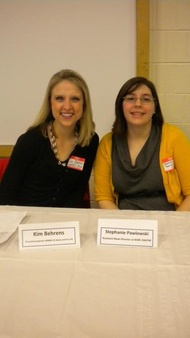
Pitching your story ideas can be a nerve-racking task, but it is all in your approach. Experts Kim Behrens and Stephanie Pawlowski spoke at a recent Chapter meeting and answered questions about the best ways to go to a company with yourpitch.
Pawlowski graduated from Southern Illinois University at Carbondale majoring in radio television, combining her two favorite aspects of communication. She now works as the assistant news director at WJBC AM/FM radio station. She brought up some important advice for those interested in breaking intothe PR world:
1. Network. Follow the company on Facebook or Twitter. Introduce yourself and always be ready to pitch a story.
2. “Call and then email.Or email and then call." Whichever you decide to do first, contact the company at least three to five days before an event is about to take place and follow up at least 24 hours before the event. The best hours to contact a radio director are between 9 a.m. and 3 p.m. It is okay to have more of a conversation when pitching to radio and the actual pitch time is not important.
3. Be timely with your pitch. That is, with your initial call or email as well as the actual story you are proposing. Be sure the story is relevant to the company you are pitching to, be specific and always be aware of what is going on in the news.
4. Localize your story. Whatever you are pitching, make sure there is a local angle that will appeal to resident viewers, readers or listeners.
5. Do not be afraid to reach out and stay in contact. Lay the groundwork for a relationship with someone in the media and be consistent.
Behrens graduated from Illinois State University with a degree in broadcast journalism. She is now working as a television anchor and reporter at WMBD-31 News and Fox-43. Working in television is a much different branch of communication from radio, but a few ideals remain the same, such as being pertinent and relevant. Her tips include:
1. Do your research and know your target. The best way to get your pitch picked up is to establish a relationship with someone in journalism—your story is much more likely to be noticed this way and will garner more consideration. The best way to get a company’s attention, whether it is TV, radio or newspaper, is to know whom you are reaching out to and to address the person by name.
2. Brainstorm.Always put together a list of fresh story ideas in order to stay current.
3. Know when to make your pitch. In television, your best bet is to call a company within mid-morning hours. Keep it brief and to the point.
4. Relate it to sales.You are basically tryingto market yourself—when creating a new interpersonal relationship with someone in PR or the media, make eye contact and offer a handshake. Do not feel inferior or overwhelmed by the media. They need stories as much as you need them to be picked up!
5. Be friendly and fearless.Get beyond the initial fear of putting yourself out there and just send the email or make the call and introduce yourself as a new person in the PR world. The power of a phone call can go a long way.
In essence, it is really all about educating yourself regarding the field you want to go into and learning how to establish relationships in the professional world. Behrens and Pawlowski’s tips can only lead to success for students as they apply for internships or jobs in the near future.
By Lindsey Clark
Pawlowski graduated from Southern Illinois University at Carbondale majoring in radio television, combining her two favorite aspects of communication. She now works as the assistant news director at WJBC AM/FM radio station. She brought up some important advice for those interested in breaking intothe PR world:
1. Network. Follow the company on Facebook or Twitter. Introduce yourself and always be ready to pitch a story.
2. “Call and then email.Or email and then call." Whichever you decide to do first, contact the company at least three to five days before an event is about to take place and follow up at least 24 hours before the event. The best hours to contact a radio director are between 9 a.m. and 3 p.m. It is okay to have more of a conversation when pitching to radio and the actual pitch time is not important.
3. Be timely with your pitch. That is, with your initial call or email as well as the actual story you are proposing. Be sure the story is relevant to the company you are pitching to, be specific and always be aware of what is going on in the news.
4. Localize your story. Whatever you are pitching, make sure there is a local angle that will appeal to resident viewers, readers or listeners.
5. Do not be afraid to reach out and stay in contact. Lay the groundwork for a relationship with someone in the media and be consistent.
Behrens graduated from Illinois State University with a degree in broadcast journalism. She is now working as a television anchor and reporter at WMBD-31 News and Fox-43. Working in television is a much different branch of communication from radio, but a few ideals remain the same, such as being pertinent and relevant. Her tips include:
1. Do your research and know your target. The best way to get your pitch picked up is to establish a relationship with someone in journalism—your story is much more likely to be noticed this way and will garner more consideration. The best way to get a company’s attention, whether it is TV, radio or newspaper, is to know whom you are reaching out to and to address the person by name.
2. Brainstorm.Always put together a list of fresh story ideas in order to stay current.
3. Know when to make your pitch. In television, your best bet is to call a company within mid-morning hours. Keep it brief and to the point.
4. Relate it to sales.You are basically tryingto market yourself—when creating a new interpersonal relationship with someone in PR or the media, make eye contact and offer a handshake. Do not feel inferior or overwhelmed by the media. They need stories as much as you need them to be picked up!
5. Be friendly and fearless.Get beyond the initial fear of putting yourself out there and just send the email or make the call and introduce yourself as a new person in the PR world. The power of a phone call can go a long way.
In essence, it is really all about educating yourself regarding the field you want to go into and learning how to establish relationships in the professional world. Behrens and Pawlowski’s tips can only lead to success for students as they apply for internships or jobs in the near future.
By Lindsey Clark
Illinois State University COM Week: Political Communication Panel
“As School of Communication students, you’re equipped to do anything you want to do,” Jeff Fritzen, councilman from the Town of Normal, said. “Communication students are quick absorbers.”
Fritzen, along with Jim Nowlan, former state legislator and Dara Brockmeyer, district office director for Dan Brady all spoke at the political communication panel during COM Week 2013 to a group of students who were eager to learn. The theme of the panel revolved around the role of social media within campaigning. There was a general consensus that in running a campaign, social media is a must.
“It’s much easier to communicate this way…the message gets sent directly to your audience rather than hoping it gets through the newspaper and TV stations,”Brockmeyer explained.
This way is efficient, but is it the most effective? With the younger generation, absolutely, but it is also important to remember the traditional ways of campaigning. Nowlan explained how it is vital to “make sure the values are being displayed in an attractive way.” Using cross media can help you achieve this. Create yard signs, newspaper inserts, direct mail and print handouts. Fritzen explained how sending emails can get easily dismissed, especially if who you are sending it to has a spam folder. Now, with something like a post card, one would have to physically touch it before they decided to dismiss the message.
The panel gave great advice that can be applied to not only students with an interest in political communication, but also to those in public relations. Whether you decide to run a campaign, participate in one or simply stay informed, it is important to have your heart in it, know why you are doing it and have a purpose.
By Shelby Ray
Fritzen, along with Jim Nowlan, former state legislator and Dara Brockmeyer, district office director for Dan Brady all spoke at the political communication panel during COM Week 2013 to a group of students who were eager to learn. The theme of the panel revolved around the role of social media within campaigning. There was a general consensus that in running a campaign, social media is a must.
“It’s much easier to communicate this way…the message gets sent directly to your audience rather than hoping it gets through the newspaper and TV stations,”Brockmeyer explained.
This way is efficient, but is it the most effective? With the younger generation, absolutely, but it is also important to remember the traditional ways of campaigning. Nowlan explained how it is vital to “make sure the values are being displayed in an attractive way.” Using cross media can help you achieve this. Create yard signs, newspaper inserts, direct mail and print handouts. Fritzen explained how sending emails can get easily dismissed, especially if who you are sending it to has a spam folder. Now, with something like a post card, one would have to physically touch it before they decided to dismiss the message.
The panel gave great advice that can be applied to not only students with an interest in political communication, but also to those in public relations. Whether you decide to run a campaign, participate in one or simply stay informed, it is important to have your heart in it, know why you are doing it and have a purpose.
By Shelby Ray
Member Monday - Hailey Lanier

Hailey Lanier, junior PRSSA member recently received a research assistantship with the Illinois State University School of Psychology.
What you will be doing as a research assistant?
As a research assistant, I will be helping with the Psychology 290 class on research methods. The class is studying blind and deaf dogs and various ways to train them. Their goal will be to increase the dogs’ obedience and skills. I will also be helping the teacher research the cognitive differences between blind and deaf dogs and dogs who can see and hear.
Why did you choose to apply for a research assistantship?
I decided to apply after my mom sent me an article about the program. Once I found out about what Mrs. Farmer-Dougan was helping with I knew I wanted to be a part of it. I have always been very interested in animals so I thought it would be a great opportunity for me.
What was the process you had to go through to receive the research assistantship?
Since I am a psychology minor and can't get into the class (it is major-only), I emailed the teacher about how I could help out. She presented me with the opportunity to be a research assistant. I had to fill out paperwork, and had an informational interview about it before I was all set up. I'm very excited to start working with her and the dogs, and I hope I am able to make a difference by developing research.
What made you choose to do you research on blind and deaf dogs?
At my internship with the Humane Society of Central Illinois there were a few deaf dogs who were available for adoption. They were harder to train, and it took much longer for them to be adopted. I am excited to help train these dogs not only so they are better behaved and more likely to be adopted, but so that we can also learn new training methods to help dogs in the future. Many times these blind and deaf dogs are called “lethal whites” as they do not have enough pigment in their skin or eyes. Many are deemed “worthless and untrainable” and are euthanized because people do not understand how to properly train them. They are just as sweet as other dogs, and can be trained with a little extra effort. I am hoping that through this research we will be able to help put an end to the unnecessary euthanization of these dogs.
What are some of the classes you would recommend other students to take that are interested in a research assistantship?
The specific classes that work with the dogs are PSY 331 and PSY 290. However, if students want to do research on a different topic, I would encourage them to find a topic they think is interesting, and then find a teacher who teaches a class on that topic. Don’t be afraid to reach out to them, I got my assistantship simply by asking the teacher about what I could do to help.
How has PRSSA helped you achieve this position?
PRSSA helped me develop professional skills and confidence. This enabled me to contact a professor asking how I could help even though I knew the course was major-blocked. Though some people may find contacting professors and professionals intimidating, I am very comfortable with it due to both things I've learned as a member and past leader of PRSSA. I hope through my conversations with other members they may want to do something similar, such as volunteering at an animal shelter. I am an active volunteer at the humane society of central Illinois, and it's a very rewarding experience.
What you will be doing as a research assistant?
As a research assistant, I will be helping with the Psychology 290 class on research methods. The class is studying blind and deaf dogs and various ways to train them. Their goal will be to increase the dogs’ obedience and skills. I will also be helping the teacher research the cognitive differences between blind and deaf dogs and dogs who can see and hear.
Why did you choose to apply for a research assistantship?
I decided to apply after my mom sent me an article about the program. Once I found out about what Mrs. Farmer-Dougan was helping with I knew I wanted to be a part of it. I have always been very interested in animals so I thought it would be a great opportunity for me.
What was the process you had to go through to receive the research assistantship?
Since I am a psychology minor and can't get into the class (it is major-only), I emailed the teacher about how I could help out. She presented me with the opportunity to be a research assistant. I had to fill out paperwork, and had an informational interview about it before I was all set up. I'm very excited to start working with her and the dogs, and I hope I am able to make a difference by developing research.
What made you choose to do you research on blind and deaf dogs?
At my internship with the Humane Society of Central Illinois there were a few deaf dogs who were available for adoption. They were harder to train, and it took much longer for them to be adopted. I am excited to help train these dogs not only so they are better behaved and more likely to be adopted, but so that we can also learn new training methods to help dogs in the future. Many times these blind and deaf dogs are called “lethal whites” as they do not have enough pigment in their skin or eyes. Many are deemed “worthless and untrainable” and are euthanized because people do not understand how to properly train them. They are just as sweet as other dogs, and can be trained with a little extra effort. I am hoping that through this research we will be able to help put an end to the unnecessary euthanization of these dogs.
What are some of the classes you would recommend other students to take that are interested in a research assistantship?
The specific classes that work with the dogs are PSY 331 and PSY 290. However, if students want to do research on a different topic, I would encourage them to find a topic they think is interesting, and then find a teacher who teaches a class on that topic. Don’t be afraid to reach out to them, I got my assistantship simply by asking the teacher about what I could do to help.
How has PRSSA helped you achieve this position?
PRSSA helped me develop professional skills and confidence. This enabled me to contact a professor asking how I could help even though I knew the course was major-blocked. Though some people may find contacting professors and professionals intimidating, I am very comfortable with it due to both things I've learned as a member and past leader of PRSSA. I hope through my conversations with other members they may want to do something similar, such as volunteering at an animal shelter. I am an active volunteer at the humane society of central Illinois, and it's a very rewarding experience.
Diversity Changes in PRSA

As the cold weather is finally coming to an end, March brought back the sunshine and flowers as spring is approaching. For many sports fans, March also marked the return in one of the most exciting times for college basketball. March Madness finally arose and fans were anxiously watching the games. The article Become A Champion Of Diversity During March Madness And Beyond cannot help to take notice of the increasing diversity of the NCAA athletes and the public relations industry.
The author of the article, Gail Dent, the associate director of public relations for the NCAA and member of the PRSA Diversity Committee, wrote about the inclusiveness of both organizations. Our society is becoming more diverse every day. We are more accepting of other cultures and religious backgrounds than in the past. During March Madness, everything from the players, fans and coaches is a melting pot.
Many years ago, minorities were not allowed to play basketball professionally. As we become more inclusive, sports will continue to see more athletes with diverse backgrounds. Dent says the public relations industry, like sports organizations, should plan ahead for the diverse changes in the industry.
“We have to see the bigger picture and find ways to implement more change, accept different ideas and embrace diverse backgrounds,” Dent said. “As we look at our publics, our publics will also take a closer look at who we are in the future.”
Public relations practitioners should plan for an increase of minorities in the field. Not only that, they have to be ready to show their publics and clients that they welcome a variety of different opinions. The industry should show public relations professionals are not a one of a kind mixture.
Dent said the PRSA Diversity Committee is working hard to make sure the industry is ready for this change. On the PRSA Diversity Committee site, they offer tips and advice to help other PRSA chapters increase their membership diversity.
As an African-American aspiring to be a public relations professional, I love hearing how the industry is preparing for and encouraging more diversity. It is inspiring to hear PRSA has a broad view of how to welcome professionals and clients to the industry. This is not only what the future will look like for the NCAA, but for all professions and fields with PRSA leading the way.
By Christine Choute
The author of the article, Gail Dent, the associate director of public relations for the NCAA and member of the PRSA Diversity Committee, wrote about the inclusiveness of both organizations. Our society is becoming more diverse every day. We are more accepting of other cultures and religious backgrounds than in the past. During March Madness, everything from the players, fans and coaches is a melting pot.
Many years ago, minorities were not allowed to play basketball professionally. As we become more inclusive, sports will continue to see more athletes with diverse backgrounds. Dent says the public relations industry, like sports organizations, should plan ahead for the diverse changes in the industry.
“We have to see the bigger picture and find ways to implement more change, accept different ideas and embrace diverse backgrounds,” Dent said. “As we look at our publics, our publics will also take a closer look at who we are in the future.”
Public relations practitioners should plan for an increase of minorities in the field. Not only that, they have to be ready to show their publics and clients that they welcome a variety of different opinions. The industry should show public relations professionals are not a one of a kind mixture.
Dent said the PRSA Diversity Committee is working hard to make sure the industry is ready for this change. On the PRSA Diversity Committee site, they offer tips and advice to help other PRSA chapters increase their membership diversity.
As an African-American aspiring to be a public relations professional, I love hearing how the industry is preparing for and encouraging more diversity. It is inspiring to hear PRSA has a broad view of how to welcome professionals and clients to the industry. This is not only what the future will look like for the NCAA, but for all professions and fields with PRSA leading the way.
By Christine Choute
Member Monday - Kaylin Smith
Kaylin Smith, senior PRSSA member recently started her own photography business, Kaylin Smith Photography. How did you become interested in photography? My passion for photography started when I received my very first digital camera on my 14th birthday. I lived in a small town and filled my free time taking photographs of the flowers, insects, animals and friends in the backyard. From there I started to upload my photographs on a blog to get advice on my photography. I got a many positive comments and realized I was actually had a skill for taking pictures. Ever since I have continuously taken photographs and now have made it a side business. What skills have you used from PRSSA to start your business? I have always been quite a shy person. After receiving my current leadership position in PRSSA, I have gained confidence in talking to new people and delegating tasks. As a photographer I will have to communicate with potential clients as well as direct them into positions for the photographs. Gaining these skills will help me build my clientele and make me an even better photographer. Have you been able to use your photography skills for PRSSA and how? I did not want to take over the historian’s job of documenting PRSSA events, but I have tried to use my photography skills at socials. I did this by adding collages from our socials to the newsletter, so I have been using my skills to take the pictures and pick out which photographs look best together. What has been the biggest challenge about starting your own business? I recently started my own business photographing my friends and family for a small fee. However, I am at the point where I would like to expand my business. I have been evaluating trying to figure out what would be a reasonable price for potential customers. My biggest challenge at this point is having to figure out how to price sessions. What has been your favorite job so far and why? My favorite part of being a photographer is using my creativity and being able to capture moments that will last forever. Recently, my best friend had her first baby and I have had so much fun finding new creative poses and capturing how much he has grown in the past five months. It is not just a single job but one that I know I will be doing for years to come, which I find very exciting and rewarding. For more information on Kaylin Smith Photography please contact her at [email protected]. |
|
Five Tips for Communicating Effectively with Diverse Audiences

Ebonne Just, account supervisor of public relations at The San Jose Group in Chicago, recently met a few of our PRSSA chapter members at the regional conference, PR the Chicago Way. She was a multi-cultural guest speaker at the event and accepted the offer to write a guest blog for our Chapter. For more information, visit http://www.thesanjosegroup.com.
Assess your knowledge/understanding of your audience
Embrace the famous opening words of MTV's celebrity biopic, "Diary": You think you know, but you have no idea. While many of us may believe we understand complex cultures outside of our own, truth of the matter is, we probably know less than we think. Before setting out to influence or represent an ethnic audience, assess how much of your understanding is fact versus assumption. A misguided perception of any group can lead to offensive marketing/advertising such as in the case of Tecate’s ill-fated “Finally a Cold Latina” outdoor ad campaign whose critics felt “the ad propagates negative stereotypes of Hispanic women as being loose and overly sexual.” Identify similarities before pointing out differences Approach multicultural marketing from a place of “How does my client/product/brand appeal to the global truth of the human experience?” as opposed to “What makes this unique group I’m marketing to different from everyone else?” According to, Maslow's Hierarchy of Needs a sense of belonging is at the core of human motivation- driving consumer behavior. Make sure your message speaks to the humanistic-self of your target and not their cultural nuances, exclusively. After all, to quote one of my favorite poets “We are more alike, my friends, than we are unalike.” Nuance unique group characteristics to customize and tailor your message Now that the core of your message is developed, segment your audience and determine the best delivery method for each group. Due to the cultural plurality of the U.S., a one-size fits all approach in marketing communication doesn’t always yield the best results. Reflect upon the motivational drivers, existential viewpoints, etc. and decide the who, what, when and where of your message: -Who is the most credible secondary source to deliver the message (i.e. spouse, parent, teacher, friend, priest, etc.)? -What is the best way to reach them (television, print, social media, radio, etc.)? -When and where is the target most likely to be open to receiving the message (morning/noon/night, in the car to and from work, while relaxing at home)? Deliver your message with authenticity As the primary source of your message, speak from a voice that aligns with your [client’s] brand identity. Too often, marketers seek to impersonate other groups in hopes the message will connect with its audience such as in the case of Ashton Kutcher's controversial Pop Chips commercial or this year’s Volkswagen Super Bowl ad. This risky technique exposes the brand to appearing culturally insensitive and alienates potential supporters. Use clear, unbiased language that allows your audience to internalize your message without reservation. |
Member Monday - Lisa Crocco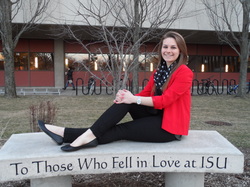
Lisa Crocco, PRSSA Vice President is also the Secretary of Public Relations for the Student Government Association on campus. She is currently running for the Executive Director of SGA for the 2013-2014 school year.
How did you become involved with the Student Government Association (SGA)? During a PRSSA Chapter meeting, member Allyson Corona made an announcement that the Student Government Association was taking applications for the position of secretary of public relations. Allyson originally held the position but quickly moved up to being the executive director. It seemed like a wonderful opportunity to get experience with my two majors: public relations and political science. I applied, was interviewed and accepted the position. Why are you choosing to run for executive director? The second I joined SGA I fell in love with it. To be a part of a student-run organization that represents over 21,000 Illinois State University students is incredible. Hearing students’ needs, representing their interests and enacting policies that make their lives at ISU easier and more enjoyable is fulfilling. I knew I wanted to continue my involvement with SGA next year and thought holding a higher position would allow me to work more closely with students. The executive director oversees all the secretaries, plans all transitions and retreats, office upkeep, payroll and focuses on SGA’s image starting internally. What experiences and leadership skills will you take from PRSSA to help you if you are elected executive director? With my current role as PRSSA vice president, I have learned how to effectively lead a large group of people. As vice president I have been responsible for contacting, organizing and overseeing all speakers, workshops and panel discussions. This will be a useful experience and skill to have if I become elected as executive director, since most of my duties will require me to be the key communicator between internal and external members of SGA and ISU. What are some ideas you would like to implement if you are elected? One idea I have for the executive director position that I would like to implement would be hosting more socials with all SGA members. PRSSA has been a wonderful example of the positive effects of having more socials and putting emphasis on making sure everyone knows one another on a personal, as well as professional level. People are more likely to enjoy what they are doing if they have positive experiences with the other members involved within the organization. What are you and your teams’ goals if you are elected? The ticket I am running on with presidential candidate Ben Adams, and vice presidential candidate, Jesse Shapiro, has three main pillars we are focusing on if elected. Those pillars are spirit, strength and service. Through the first pillar of spirit we want to capture, preserve and expand what it truly means to be a Redbird. Through strength we plan to ensure fiscal responsibility for student fee dollars. Through our third pillar of service, this administration will carry out its civic duty to focus on the needs and desires of the students. To learn more about the election and our platform, visit “Vote Our State for Student Government Association.” Questions Composed By: Marrison Worthington |
|
March 2013
Pass over the Passover messages to Israeli soldiers
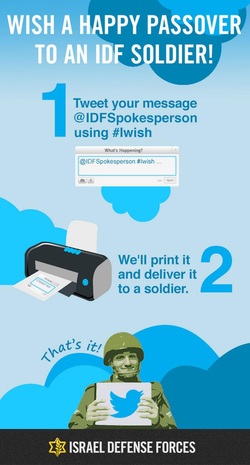
The Jewish culture celebrates the holiday of Passover, which began at sunset on Monday, March 25. The holiday lasts for eight days internationally and seven in Israel. The extra day everywhere else is to recognize those who could not be in the Holy Land to celebrate with family, friends and ancestors who fought for the Jews to be alive today. Israel is consistently at war and to become a citizen of the nation, 17 to 19-year-olds just out of high school fight for the Israeli Defense Force or IDF for two to three years, aside from those who stay longer or who are drafted during times of need. Those who are not with their families have to miss the holiday of Passover, whether the soldier is from Israel, the United States or any other country. The IDF spokesperson who controls the official account of the IDF sent out a tweet on Thursday, March 21 to those interested in sending Passover messages to soldiers.
“Want to say Happy Passover to an IDF soldier? Reply to @IDFSpokesperson w/ your message, use #Iwish, & we’ll send it!” Following this tweet was a link to the photo of how the process works.
The PR strategy here is simple, yet hard-hitting and timely. Any person in the world can send a message to a soldier fighting for the people of Israel simply using Twitter. While being able to appreciate these fighters at any time of the year is crucial, it is wonderful knowing these men and women get recognized during the holidays when they should be with friends and family. This message was sent to all the followers, which is over 211,000 and was retweeted by 114 and favorited by 40. All anyone has to do is send a tweet to the account with a specific hashtag, say any message they wish and the rest is taken care of.
Many places send Christmas stockings to soldiers during the winter holidays, but this is a message that can be created within seconds and will serve a similar emotional purpose as sending holiday goodies. Not much time is needed, just some love in a message. Major props to the IDF team for marketing themselves in such an effective way. Happy Passover to all those in the IDF and around the world! Keep strategizing!
For more information, visit the official IDF Twitter page at twitter.com/IDFSpokesperson.
By Jennifer Novoseletsky
“Want to say Happy Passover to an IDF soldier? Reply to @IDFSpokesperson w/ your message, use #Iwish, & we’ll send it!” Following this tweet was a link to the photo of how the process works.
The PR strategy here is simple, yet hard-hitting and timely. Any person in the world can send a message to a soldier fighting for the people of Israel simply using Twitter. While being able to appreciate these fighters at any time of the year is crucial, it is wonderful knowing these men and women get recognized during the holidays when they should be with friends and family. This message was sent to all the followers, which is over 211,000 and was retweeted by 114 and favorited by 40. All anyone has to do is send a tweet to the account with a specific hashtag, say any message they wish and the rest is taken care of.
Many places send Christmas stockings to soldiers during the winter holidays, but this is a message that can be created within seconds and will serve a similar emotional purpose as sending holiday goodies. Not much time is needed, just some love in a message. Major props to the IDF team for marketing themselves in such an effective way. Happy Passover to all those in the IDF and around the world! Keep strategizing!
For more information, visit the official IDF Twitter page at twitter.com/IDFSpokesperson.
By Jennifer Novoseletsky
How Companies are Using Social Media and Crises to Create Good Press

Crises, especially those centered around social media, are almost always detrimental to companies and affect reputations in a very negative way. Recently however, many companies have been finding ways to actually use crises to turn things around and portray themselves in a positive light. Most are doing this through social media sites such as Twitter.
One of the first examples of this was the Red Cross. In 2011, the Red Cross had a “rogue tweet” sent out from their account that read, “Ryan found two more 4 bottle packs of Dogfish Head’s Midas Touch beer….when we drink we do it right #gettngslizzerd.” The original tweet was sent out at 11:24 p.m. on Tuesday, Feb. 15. The social media team for the organization acted quickly tweeting, “We’ve deleted the rogue tweet but rest assured the Red Cross is sober and we’ve confiscated the keys,” just an hour later.
Dogfish Head, a craft beer company who was amused by the original tweet, actually went as far as to create a string of tweets using the hashtag, “#gettngslizzerd” with messages about donating to the Red Cross. Soon after, the Red Cross sent out a tweet thanking Dogfish Head for their support, as well as posting on their blog. They spoke of how they were thankful people helped turn their, “social media mistake” into a good thing.
Another example of brands turning a crisis into a good thing is the Super Bowl blackout. Although this was a disaster for the NFL and for many of the fans in attendance at the Super Bowl, brands took to Twitter to promote their name.
Buffalo Wild Wings was a brand that contributed a funny tweet to make light of the situation. The restaurant has several commercials featuring workers pushing special buttons to delay the game because their customers are not ready to leave yet. Before the company sent out an official tweet, many people were saying things like “this seems like a Buffalo Wild Wings commercial.” Buffalo Wild Wings responded to this by tweeting “We just really don’t want football season to end. Can you blame us?” The company’s CEO credits this tweet for bringing them extra business this year.
Most recently, there have been Twitter hackings. The Burger King Twitter account was the first to be targeted. Hackers changed the main picture to the McDonalds logo and claimed, “We just got sold to McDonalds.” The hackers also posted many tweets, most were either taking stabs at Burger King’s food or were blatantly racist.
Jeep’s twitter account was also hacked, posting similar inappropriate tweets, and making the profile picture the Cadillac logo. While this was a disaster for both Burger King and Jeep, some other companies used it to promote themselves. McDonalds tweeted “We empathize with our Burger King counterparts. Rest assured, we had nothing to do with the hacking.” Wendy’s also chimed in tweeting, “We have an alibi.” While this was a crisis for Burger King at the time, many people understood that it was not them tweeting and the company ended up gaining followers because of the situation.
What all of these events have in common is the use of humor and humility. None of the companies were afraid to address the situation and all used light humor to show their fun side as well. These events make companies more relatable to their consumers since they no longer perceive companies as a faceless brand, but are able to see the more “human” side of them.
By Hailey Lanier
One of the first examples of this was the Red Cross. In 2011, the Red Cross had a “rogue tweet” sent out from their account that read, “Ryan found two more 4 bottle packs of Dogfish Head’s Midas Touch beer….when we drink we do it right #gettngslizzerd.” The original tweet was sent out at 11:24 p.m. on Tuesday, Feb. 15. The social media team for the organization acted quickly tweeting, “We’ve deleted the rogue tweet but rest assured the Red Cross is sober and we’ve confiscated the keys,” just an hour later.
Dogfish Head, a craft beer company who was amused by the original tweet, actually went as far as to create a string of tweets using the hashtag, “#gettngslizzerd” with messages about donating to the Red Cross. Soon after, the Red Cross sent out a tweet thanking Dogfish Head for their support, as well as posting on their blog. They spoke of how they were thankful people helped turn their, “social media mistake” into a good thing.
Another example of brands turning a crisis into a good thing is the Super Bowl blackout. Although this was a disaster for the NFL and for many of the fans in attendance at the Super Bowl, brands took to Twitter to promote their name.
Buffalo Wild Wings was a brand that contributed a funny tweet to make light of the situation. The restaurant has several commercials featuring workers pushing special buttons to delay the game because their customers are not ready to leave yet. Before the company sent out an official tweet, many people were saying things like “this seems like a Buffalo Wild Wings commercial.” Buffalo Wild Wings responded to this by tweeting “We just really don’t want football season to end. Can you blame us?” The company’s CEO credits this tweet for bringing them extra business this year.
Most recently, there have been Twitter hackings. The Burger King Twitter account was the first to be targeted. Hackers changed the main picture to the McDonalds logo and claimed, “We just got sold to McDonalds.” The hackers also posted many tweets, most were either taking stabs at Burger King’s food or were blatantly racist.
Jeep’s twitter account was also hacked, posting similar inappropriate tweets, and making the profile picture the Cadillac logo. While this was a disaster for both Burger King and Jeep, some other companies used it to promote themselves. McDonalds tweeted “We empathize with our Burger King counterparts. Rest assured, we had nothing to do with the hacking.” Wendy’s also chimed in tweeting, “We have an alibi.” While this was a crisis for Burger King at the time, many people understood that it was not them tweeting and the company ended up gaining followers because of the situation.
What all of these events have in common is the use of humor and humility. None of the companies were afraid to address the situation and all used light humor to show their fun side as well. These events make companies more relatable to their consumers since they no longer perceive companies as a faceless brand, but are able to see the more “human” side of them.
By Hailey Lanier
Member Monday - Masa Sun
Masa Sun, senior PRSSA member is one of the founders of the only skateboarding RSO on Illinois State University's campus, Skate Ilstu.
Why was Skate Ilstu started? We decided to start Skate Ilstu because we wanted to meet more people who we could skateboard with while we were at school. Skating is more enjoyable with other people, and before the club, we found ourselves not having many people to call to go skate with. It’s a funny story how it started actually. I started Skate Ilstu with my best friend Steve, after he transferred to ISU during sophomore year. We had grown up skating together back at home, so we would get together with a few other friends to skate whenever we could. The idea of a skate club would occasionally bounce around between us, but we had our doubts about it. This was also during the time when I had the most stressful time deciding on a major, so I would frequently meet up with career advisor, Mark Fauble for help. After agreeing that a communication studies major was suitable for my interests, he then explained to me about how important it is to get involved. It was then that I decided I would check out PRSSA for my major and also talk to Steve about following through on the RSO idea. Mark has been Skate Ilstu’s faculty advisor ever since, and we all couldn’t agree more about how awesome this journey has been! How have you incorporated your skills from PRSSA into growing and developing Skate Ilstu? So many things I’ve learned from PRSSA have helped me with Skate Ilstu, such networking and communicating with members, the use of social media and event planning. Has Skate Ilstu recently won any awards, if so what are they? I don’t believe we have one any physical awards, but I constantly witness progression from everyone. To us, the constant progression of expanding our skills and overcoming fears are the most valuable awards. We work as a family to motivate each other to skate our best. What position do you hold in Skate Ilstu and what are your responsibilities? I am currently the president, serving my last term until this semester ends. My responsibilities include event planning, gathering members together to skate and coming up with new ideas to improve the organization. What is your ultimate mission for Skate Ilstu? Our mission is to become a more closely knit community where anyone who skates or is interested in skating can feel welcome and is excited to be a part of Skate Ilstu. Before I graduate, I want to lay a solid foundation and structure so that all student skateboarders can continue to make new friends and motivate each other to keep skating, have fun and progress during their years at Illinois State University. You can learn more about Skate Ilstu by liking its Facebook page or joining its Facebook Group. Questions composed by Marrison Worthington |
|
February 2013
Member Monday - Kelsey Nevius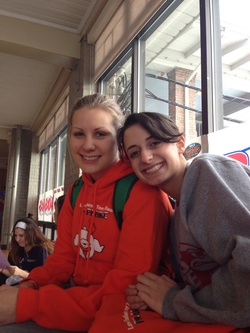
Kelsey Nevius, senior PRSSA member recently planned the Epsilon Sigma Alpha Polar Plunge. Epsilon Sigma Alpha is an Illinois State University service and leadership organization that works to serve the community and several philanthropies.
Why did you choose to raise money for Polar Plunge instead of another non-profit? Epsilon Sigma Alpha (ESA) participates in different events that go on in the Bloomington-Normal community. The Polar Plunge is popular in our chapter because it is so different from any other fundraiser. It’s not every day that you can run into a frozen lake for charity. It is definitely an experience! This was the third year for ESA to plunge and we raised over $4,000 for the Special Olympics. What position do you have in Epsilon Sigma Alpha that allowed you to plan the Polar Plunge? I am one of three Junior Philanthropic Chairs. What are some of your responsibilities that come along with this position? The three of us work together to coordinate different events that take place in the community. Some examples of the events we have participated and volunteered for this year include the Walk to End Alzheimer’s, ISU Alumni Window Painting, Glenn Elementary School Carnival, hosted a blood drive and adopted two families to give presents to for Christmas. We are also planning to participate in Relay for Life and the March of Dime’s March for Babies event. What steps did you take to register your RSO for Polar Plunge? Registering for the Polar Plunge was actually really simple. They have a website through First Giving and one of the other girls I work with created a team for ESA. The girls that participated joined our team and were required by the Special Olympics to raise a minimum of $75 in order to plunge. What was your favorite part of Polar Plunge? My favorite part of the Polar Plunge was watching all of the girls that I ran into the water with. A lot of anticipation builds up when you are standing outside in 20 degree weather in shorts and a t-shirt waiting to run into a frozen lake. Once all of us were in the water there was a lot of girly screaming, laughter and tears! It was so fun and absolutely miserable at the same time. I am happy I did it! Questions composed by Marrison Worthington |
Job Search 101 Panel
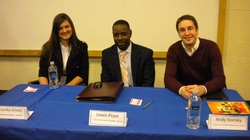
The thought of trying to land an internship or your first professional job can be both intimidating and frightening. Google is one of the first places people look for information on what to include on a résumé, how to prepare for an interview and what to showcase in a portfolio, but there are many different opinions on what the “right” thing to do is. In Chapter, we were lucky enough to have a panel of professionals give us advice using their personal experiences on tips to enhance our résumé, interview approach and portfolio.
Caterpillar communication and talent development lead, Andy Konsky, gave advice on how to adapt your résumé based on where, when and how you are submitting it. With many companies switching to an online résumé format, it was very helpful to know what to keep the same and what to leave out. Many of the tips were basic, but here are a few I found to be the most helpful:
1. If your grade point average is low, do not include it if your résumé is submitted online, only if submitted in person at a job fair. You want to be able to have a conversation about your GPA and explain your circumstances.
2. If you have an online portfolio, LinkedIn account or online résumé, include the information in your contact information.
3. Your work experience should not just list what you have done but what you have achieved in those roles. Use numerical measurements, like media mentions, impressions, etc., whenever possible.
PR specialist, Danika Kmetz, gave worthy advice on not only how to prepare for an interview, but also on the different types of interviews you may encounter. When you think of interview types, many think of the typical face-to-face, phone and panel styles. Kmetz had advice on each, but here are a few that stood out:
1. During a phone interview, make sure to keep up your enthusiasm and energy since interviewers do not have the non-verbal feedback that you would get from a traditional interview. You should even dress the part so you feel professional and confident!
2. If you have a panel interview, stay calm. Acknowledge the person asking the question, but do not forget to make eye contact with the other interviewers as well.
3. Keep a list of common interview questions and write down answers for each so you can practice for future interviews. However, make sure the stories sound genuine; do not memorize them.
State Farm assistant vice president of public affairs and our Chapter’s professional adviser, Lewis Pryor, took his own personal experience and gave tips on what to put in your portfolio. A portfolio can enhance your chances of landing a job, but knowing what to include can be challenging. Here are a few of the tips I found most valuable:
1. Using class work inside your portfolio is acceptable until you have enough real world examples. Typically by the time you are a junior or senior you should be able to show some work you completed outside of class.
2. Include the original work you created (ex: a press release you wrote), but also include any media coverage that may have generated as a result. This shows that your work was successful. Also add impression numbers if you have them.
3. Leave behind some of your best work with the interviewer. You most likely won’t have time during your interview to show all of your work.
Each professional that spoke left our Chapter members with many different tips to apply when they are preparing for their next internship or job. Learning from these professionals definitely made our Chapter members better candidates upon graduation.
By Kaylin Smith
Caterpillar communication and talent development lead, Andy Konsky, gave advice on how to adapt your résumé based on where, when and how you are submitting it. With many companies switching to an online résumé format, it was very helpful to know what to keep the same and what to leave out. Many of the tips were basic, but here are a few I found to be the most helpful:
1. If your grade point average is low, do not include it if your résumé is submitted online, only if submitted in person at a job fair. You want to be able to have a conversation about your GPA and explain your circumstances.
2. If you have an online portfolio, LinkedIn account or online résumé, include the information in your contact information.
3. Your work experience should not just list what you have done but what you have achieved in those roles. Use numerical measurements, like media mentions, impressions, etc., whenever possible.
PR specialist, Danika Kmetz, gave worthy advice on not only how to prepare for an interview, but also on the different types of interviews you may encounter. When you think of interview types, many think of the typical face-to-face, phone and panel styles. Kmetz had advice on each, but here are a few that stood out:
1. During a phone interview, make sure to keep up your enthusiasm and energy since interviewers do not have the non-verbal feedback that you would get from a traditional interview. You should even dress the part so you feel professional and confident!
2. If you have a panel interview, stay calm. Acknowledge the person asking the question, but do not forget to make eye contact with the other interviewers as well.
3. Keep a list of common interview questions and write down answers for each so you can practice for future interviews. However, make sure the stories sound genuine; do not memorize them.
State Farm assistant vice president of public affairs and our Chapter’s professional adviser, Lewis Pryor, took his own personal experience and gave tips on what to put in your portfolio. A portfolio can enhance your chances of landing a job, but knowing what to include can be challenging. Here are a few of the tips I found most valuable:
1. Using class work inside your portfolio is acceptable until you have enough real world examples. Typically by the time you are a junior or senior you should be able to show some work you completed outside of class.
2. Include the original work you created (ex: a press release you wrote), but also include any media coverage that may have generated as a result. This shows that your work was successful. Also add impression numbers if you have them.
3. Leave behind some of your best work with the interviewer. You most likely won’t have time during your interview to show all of your work.
Each professional that spoke left our Chapter members with many different tips to apply when they are preparing for their next internship or job. Learning from these professionals definitely made our Chapter members better candidates upon graduation.
By Kaylin Smith
Mary K. Garner Enlightens PRSSA Members

On Tuesday, Feb. 5, our PRSSA Chapter had the pleasure of hearing Enterprise Rent-A-Car Talent Acquisition Specialist Mary Kate Garner speak about her experiences as a job recruiter. Enterprise is the largest car rental service in the United States. The corporation also provides "fleet management" which allows third party companies to rent fleet cars from them.
Garner's job includes attending career and internship fairs at various universities since Enterprise only hires individuals with a Bachelor's degree. In fact, last year they hired 11,000 college graduates (hint, hint). What I like about the Enterprise employment process is everyone starts at the same entry level position. When hired, all employees have to attend a nine to12 month management training program. Garner noted that even President Pamela Nicholson did this training. Enterprise also builds opportunities for an employee to advance his/her career. Garner showed us an infographic of where you start and can end up as an Enterprise employee.
Since Garner is a job recruiter she also gave us a lot of practical advice for those who are entering the job force. As a graduating senior, her tips helped me understand what recruiters are looking for when hiring. Garner said if you do not know how to begin searching for a job, start at a job and internship fair. Talk to the recruiters about employment opportunities and follow up with them. When you follow up with them, be sure to mention something memorable about your conversation. Recruiters see a lot of graduating students on a regular basis, so you need to make sure you stand out. When you approach recruiters Garner urged us not to say “what do you have to offer me?” Instead, ask about what the company is looking for in an employee.
When asked about the “color on resume” debate, Garner said she prefers no color. While that is a personal preference she said, “let the experience speak for itself, not the color or graphic.” Garner also advised us to cater our resume to the specific employer in which you are applying to.
I enjoyed hearing Garner speak to our Chapter. She had wonderful insights as to how we can present ourselves to the job world. Whether you are looking for a job or an internship, Garner taught us how to make ourselves marketable in the job world.
If you are interested in possible employment opportunities at Enterprise Rent-A-Car, visit www.erac.com/ for more information.
By Christine Choute
Garner's job includes attending career and internship fairs at various universities since Enterprise only hires individuals with a Bachelor's degree. In fact, last year they hired 11,000 college graduates (hint, hint). What I like about the Enterprise employment process is everyone starts at the same entry level position. When hired, all employees have to attend a nine to12 month management training program. Garner noted that even President Pamela Nicholson did this training. Enterprise also builds opportunities for an employee to advance his/her career. Garner showed us an infographic of where you start and can end up as an Enterprise employee.
Since Garner is a job recruiter she also gave us a lot of practical advice for those who are entering the job force. As a graduating senior, her tips helped me understand what recruiters are looking for when hiring. Garner said if you do not know how to begin searching for a job, start at a job and internship fair. Talk to the recruiters about employment opportunities and follow up with them. When you follow up with them, be sure to mention something memorable about your conversation. Recruiters see a lot of graduating students on a regular basis, so you need to make sure you stand out. When you approach recruiters Garner urged us not to say “what do you have to offer me?” Instead, ask about what the company is looking for in an employee.
When asked about the “color on resume” debate, Garner said she prefers no color. While that is a personal preference she said, “let the experience speak for itself, not the color or graphic.” Garner also advised us to cater our resume to the specific employer in which you are applying to.
I enjoyed hearing Garner speak to our Chapter. She had wonderful insights as to how we can present ourselves to the job world. Whether you are looking for a job or an internship, Garner taught us how to make ourselves marketable in the job world.
If you are interested in possible employment opportunities at Enterprise Rent-A-Car, visit www.erac.com/ for more information.
By Christine Choute
Pictures Tell the Story
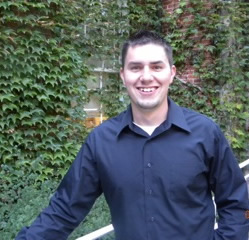
After reading a compelling post from Ragan News titled “6 PR and social media predictions for 2013,” the fifth point, “Pictures tell the story” was one I thought was worth sharing. With the rise of infographics, photo sharing and Instagram, knowing how to produce a quality, visually-appealing message will be a must in 2013. Simply telling a story will not be enough; public relations professionals will need to know how to convey the message in an image that speaks to their audience.
When I finished reading the post, I remembered a beta site named infogr.am that President Kaitie Ries discovered earlier this year. Infogr.am allows you to build your own infographic and encompasses all the essential tools needed to turn data into an eye-catching, creative graphic.
The one year anniversary of my company, VOID Clothing, is just around the corner, and I’ve been looking for a way to use Facebook Insights to create a story that showed our demographics over the year. I knew an infographic was the perfect way to tell our story. To see it, click here.
When I finished reading the post, I remembered a beta site named infogr.am that President Kaitie Ries discovered earlier this year. Infogr.am allows you to build your own infographic and encompasses all the essential tools needed to turn data into an eye-catching, creative graphic.
The one year anniversary of my company, VOID Clothing, is just around the corner, and I’ve been looking for a way to use Facebook Insights to create a story that showed our demographics over the year. I knew an infographic was the perfect way to tell our story. To see it, click here.
One great tool that infogr.am offers is the upload function. When you are creating tables or graphs you can upload the statistics you have right from Excel instead of having to retype it all, a HUGE time saver. Even though we are working in PR, remember that does not mean that we can forget the math we once learned. Math formulas combined with quality research will create statistics and percentages that a professor, boss or client would love to see.
You might be wondering why infographics are important in today’s world but it’s simple. People want to read new, creative and interesting messages from the companies they love. Knowing how to create infographics is a skill that will stand out to employers when looking through a sea of resumes.
By Kyle Slamans
You might be wondering why infographics are important in today’s world but it’s simple. People want to read new, creative and interesting messages from the companies they love. Knowing how to create infographics is a skill that will stand out to employers when looking through a sea of resumes.
By Kyle Slamans
Member Monday: Becca LathamThis is the first post in a series titled “Member Monday,” designed to recognize members who stand out in our school and community outside of ISU PRSSA. Recently one member, Becca Latham, attended the Tri-Delta Leadership weekend at St. Jude Children’s Research Hospital in Memphis, Tenn. Her sorority, Delta Delta Delta, partners with St. Jude Children’s Research Hospital and hosts many philanthropic events to support the development of the hospital. 1.) Why did you choose to attend the St. Jude leadership weekend? I was chosen by my chapter as next year’s philanthropy chair and all philanthropy chairs attended the leadership conference. I was lucky enough to also attend the conference with our president, Danielle Dorion. 2.) What was your favorite part about the conference? My favorite part was visiting the hospital for the second time. I love seeing how the hospital uses the money we raise. Nationally, Tri Deltas have raised $1 million to name the Teen Room, $10 million to name the Patient Care Floor and are currently working to raise $15 million to name the Specialty Clinic located in the Patient Care Center. Around each of these rooms and throughout the hospital, there are signs of Tri Delta to remind the kids that we support them. It is such a rewarding feeling to walk through the halls and see our Greek letters everywhere. You would think that visiting a hospital is a sad experience, but not at St. Jude. All of the walls are painted with bright colors, the children’s artwork lines the walls and the waiting rooms are filled with games and toys. In addition, the desks are at the children’s height so the reception desk workers are speaking directly to both the parents and their children. One of my favorite things about St. Jude is that the nurses wheel the kids around in wagons instead of wheel chairs. St. Jude has thought of just about everything to help accommodate the kids while they are busy fighting for their lives. 3.) What tools did you bring back from the conference? I gained a lot of tools to help me plan events both for my position as philanthropy chair and in my future career. Phired Up Productions, an education firm, presented at the conference. I learned the importance of working with your chapter and asking others to help with the event if needed. I also learned a lot of small ideas such as strategically reaching out to external resources and organizations. I really enjoyed meeting other philanthropy chairs and exchanging ideas about fundraisers. "Being at the conference revitalized my enthusiasm for helping St. Jude and reminded me how important fundraising for such an amazing organization is." 4.) How do you feel you will be able to use those tools at ISU and in your career? The things I learned at conference will help me plan my fundraising events both this spring and next fall. It will help my future career because one day I hope to work for St. Jude. I would love to be a part of their American Lebanese Syrian Associated Charities (ALSAC) team as a public relations representative. The ALSAC team has been the exclusive fundraising organization of St. Jude Children's Research Hospital since 1957. 5.) Did you sightsee while on the trip? If so, what was your favorite thing that you did? My favorite thing to visit was the hospital. However, we also went to Graceland. It was neat to see the unique furniture and decorations that Elvis had in his house. It was a really cool place to tour and I had a lot of fun with the new friends I made that weekend. Friend Becca on Facebook or follow her on Twitter. If you or a member you know would like to be featured in Member Monday, email Marrison Worthington, blog chair, at [email protected]. |
January 2013
What's Yours Like?
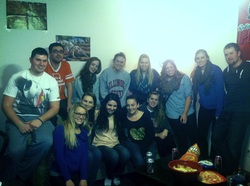
Mentor/mentee game night attendees.
“I like to put as much in as I can.”
“I use it once a day.”
“Sometimes I skip using this and just do it myself.”
Can you figure out what the object being described by these clues is? That was object of the game “What’s Yours Like?” and it provided quite the challenge for the 14 ISU PRSSA members who attended the mentor/mentee game night.
“We wanted to do a mentor/mentee game night because being at someone’s apartment gives everyone a chance to get to know each other on a more personal level,” Kelsey Carey, treasurer and mentor of ISU PRSSA, said. “If you’re out somewhere, it’s a little more formal. A game night was a good chance to get to know everyone in a more casual way.”
The event took place at Kyle Slamans’ apartment. Members brought snacks to share, including chips and homemade dip, veggies and cupcakes baked from scratch. President Kaitie Ries brought the games, including “Catch Phrase,” “The Game of Things” and “What’s Yours Like?”
“What’s Yours Like?” is a game in which players give clues to describe common objects such as windshield wipers, jewelry and naps. The clues ranged from silly to creative and it was surprisingly difficult to figure out some of the objects. Some players figured out their objects in as little as three clues while others needed hints from everyone, which often proved more confusing than helpful.
“I felt like it was a really good opportunity to meet new members that I didn’t know,” Emma Newman, member of PRSSA, said. “As a mentor, I got to meet other people’s mentees.”
Mentors and mentees alike enjoyed themselves at the game night. It was a casual, low-key way for PRSSA members to get together, have fun and get to know each other a little better.
By the way, the answer from above is a dishwasher.
By Abby Brennan
“I use it once a day.”
“Sometimes I skip using this and just do it myself.”
Can you figure out what the object being described by these clues is? That was object of the game “What’s Yours Like?” and it provided quite the challenge for the 14 ISU PRSSA members who attended the mentor/mentee game night.
“We wanted to do a mentor/mentee game night because being at someone’s apartment gives everyone a chance to get to know each other on a more personal level,” Kelsey Carey, treasurer and mentor of ISU PRSSA, said. “If you’re out somewhere, it’s a little more formal. A game night was a good chance to get to know everyone in a more casual way.”
The event took place at Kyle Slamans’ apartment. Members brought snacks to share, including chips and homemade dip, veggies and cupcakes baked from scratch. President Kaitie Ries brought the games, including “Catch Phrase,” “The Game of Things” and “What’s Yours Like?”
“What’s Yours Like?” is a game in which players give clues to describe common objects such as windshield wipers, jewelry and naps. The clues ranged from silly to creative and it was surprisingly difficult to figure out some of the objects. Some players figured out their objects in as little as three clues while others needed hints from everyone, which often proved more confusing than helpful.
“I felt like it was a really good opportunity to meet new members that I didn’t know,” Emma Newman, member of PRSSA, said. “As a mentor, I got to meet other people’s mentees.”
Mentors and mentees alike enjoyed themselves at the game night. It was a casual, low-key way for PRSSA members to get together, have fun and get to know each other a little better.
By the way, the answer from above is a dishwasher.
By Abby Brennan
Fall 2012 Posts
November 2012Click the image to read the full article
|
Click the image to read the full article
October 2012 |
September 2012Click the image to read the full article
|
